Manuel Antonio National Park is well known for its white, sandy beaches and its diverse wildlife. It is one of the most popular national parks to visit in Costa Rica.
In this relatively small national park, visitors can see howler monkeys, three-toed and two-toed sloths, toucans, motmots, white-faced capuchin monkeys, squirrel monkeys, dolphins, whales, as well as snakes, bats, spiders, and quite a few lizards.
The best way to see this wildlife is to take a guided tour, which we will cover in detail in this guide.
In addition to the wildlife sightings, visitors can also go hiking, swimming, and relax on the beach.
Manuel Antonio National Park was our introduction to the amazing landscapes and wildlife in Costa Rica. Visiting this park on the first full day of our two-week adventure was the perfect way to kick off our road trip. With its pristine beaches, lush rainforests, and diverse wildlife, our time in Manuel Antonio was nothing short of unforgettable.
In this guide, we cover:
- The best things to do in Manuel Antonio National Park
- How to purchase your tickets
- If it is worth it to hire a guide
- What to bring (and what NOT to bring)
- Important things to know before you visit the park
Note: This guide only covers Manuel Antonio National Park…it does not cover the other beaches, sites, and attractions in and around the town of Manuel Antonio.
#1 Tip for Visiting Manuel Antonio National Park
Before we go deeper into things to do in Manuel Antonio National Park, the most important thing to know is that you must purchase your ticket in advance. The number of visitors is limited to 2,500 per day and these spots are sold as timed entry tickets. Without a reservation made in advance, you may not get into the park.
Tickets can only be purchased through the SINAC website. They are not for sale at the entrance booth, so you cannot show up and purchase a ticket. These tickets sell out in advance, so purchase yours once you know the dates you will be in Manuel Antonio.
The second most important thing to know is that the park is CLOSED ON TUESDAY. From Wednesday through Monday, the park is open from 7 am to 3 pm. Confirm hours before you go on the official website.
Please practice the seven principles of Leave No Trace: plan ahead, stay on the trail, pack out what you bring to the hiking trail, leave areas as you found them, minimize campfire impacts, be considerate of other hikers, and do not approach or feed wildlife.
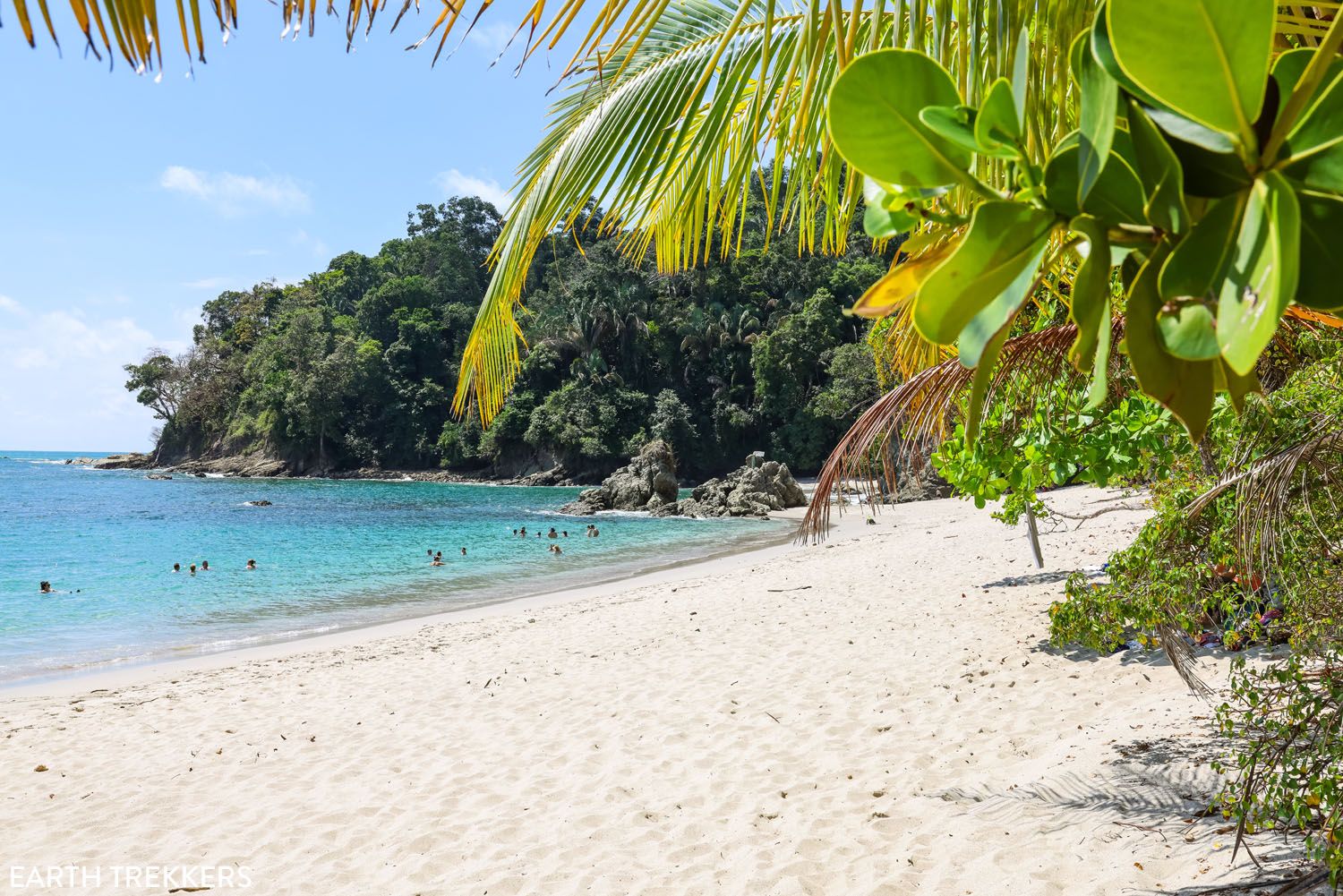
Manuel Antonio Beach
Best Things to Do in Manuel Antonio National Park
The list of things to do in Manuel Antonio National Park is very small. Taking a guided tour to spot wildlife (or trying your luck on your own) is the #1 thing to do here, but the beaches and a few hiking trails also make the list.
1. Wildlife Sightings & Guided Wildlife Walks
The very best thing to do in Manuel Antonio National Park is to see its diverse wildlife. And the best way to do this is to hire a guide.
We took this tour, a 2-hour guided wildlife walk through Manuel Antonio National Park that can be done as a private tour.
Our tour started at 7:30 am, just 30 minutes past opening time. The morning is the best time to visit the park, not only because the animals are more active, but also because this is the coolest part of the day to be here.
Our guide was incredible. Not only could he spot animals that were very difficult to see, but he also took some stunning photos using our smartphones and his scope.
Animals You Can See: Over 100 mammals and 180 species of birds live in Manuel Antonio National Park. Animals that can be seen in the park include three of the four species of monkeys in Costa Rica (white-face capuchin monkeys, squirrel monkeys, and howler monkeys), two-toed and three-toed sloths, iguanas, common basilisks, toucans, woodpeckers, tanagers, turkey vultures, coatis, and many species of snakes, insects, arachnids, and bats. Dolphins and migrating whales can also be seen.
Here are a few photos from our guided walk.
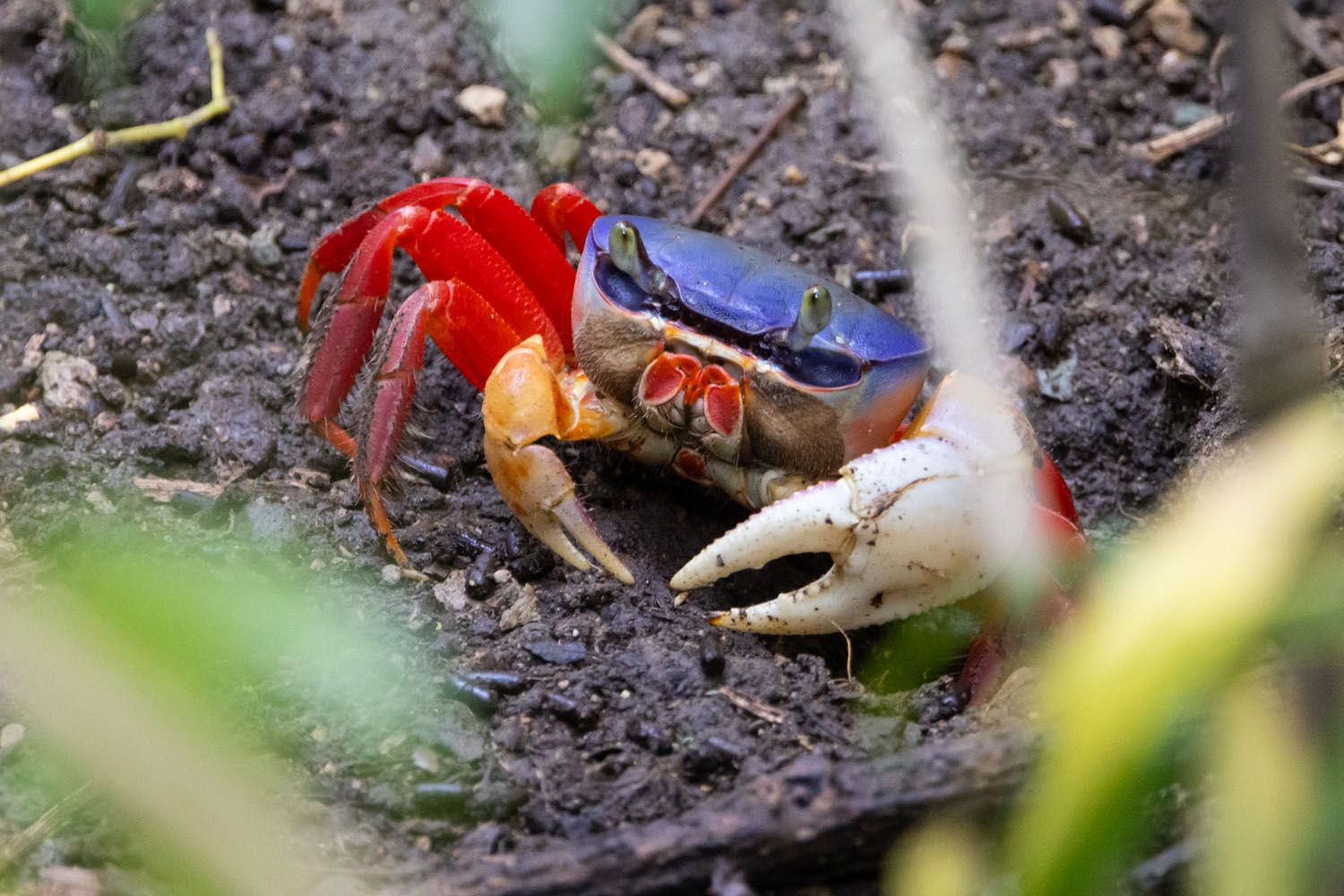
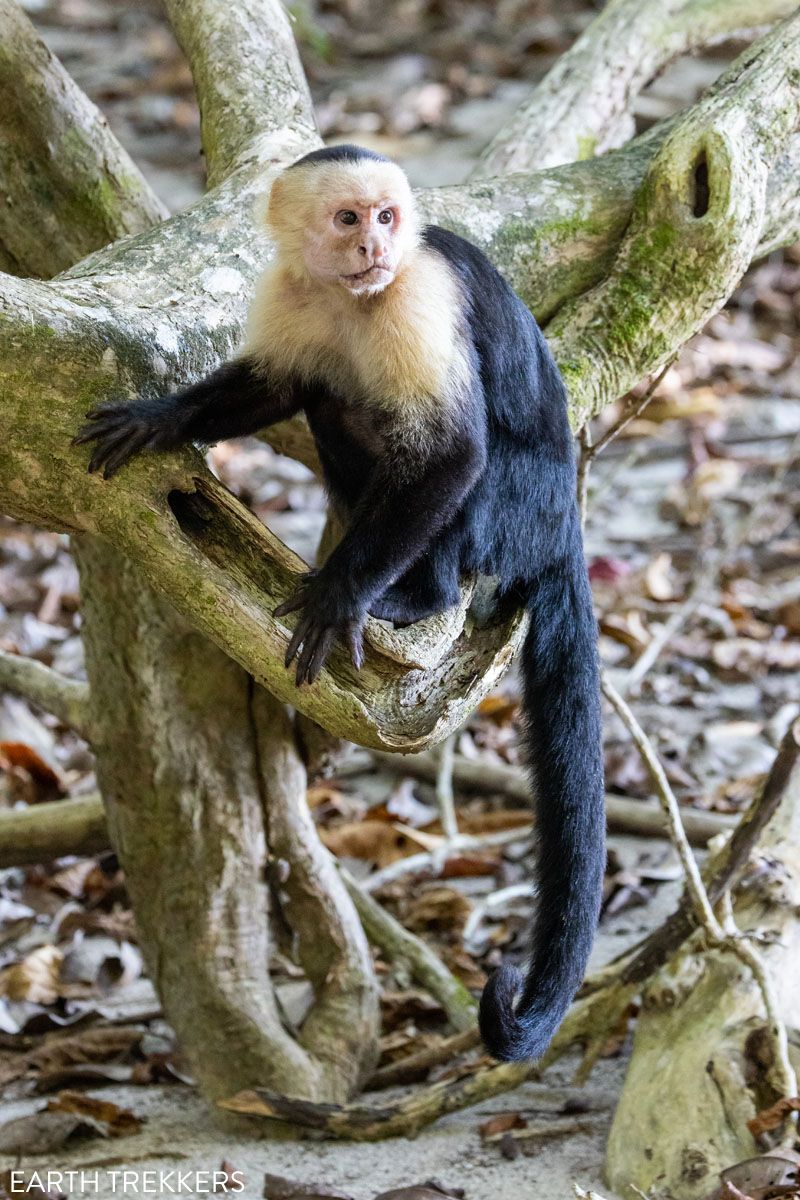
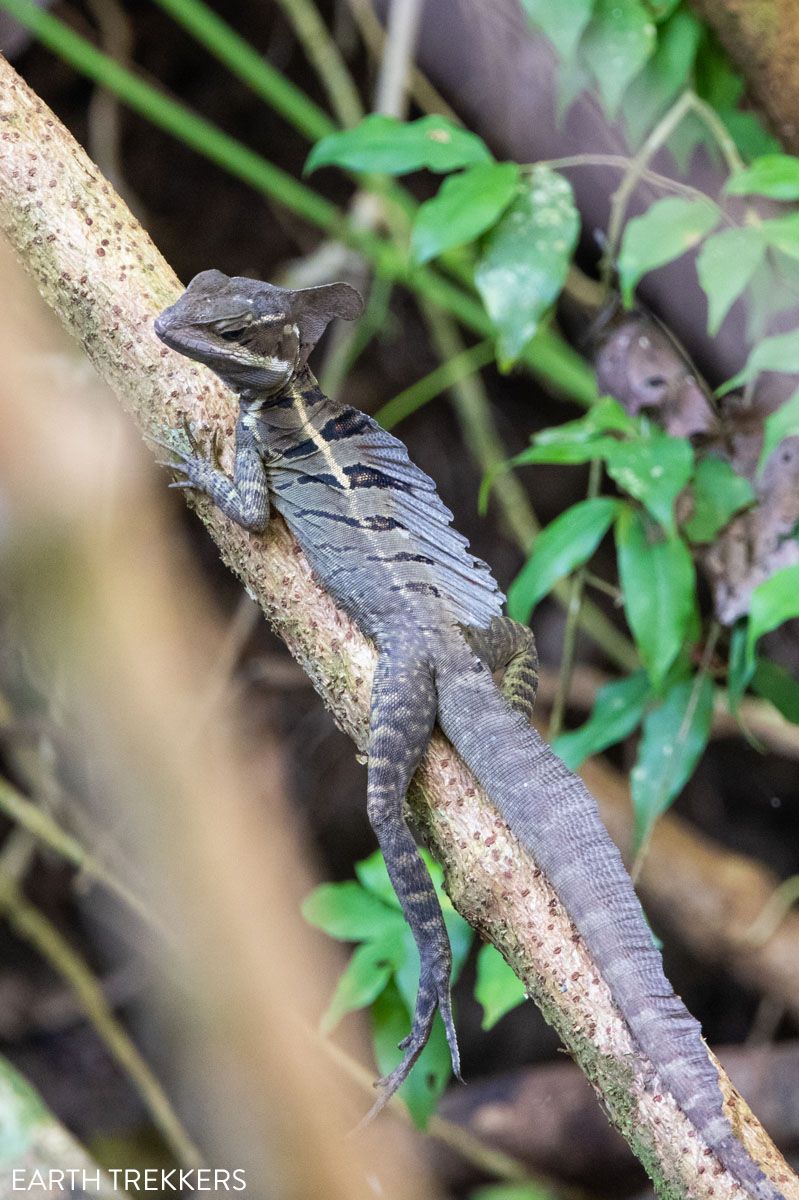
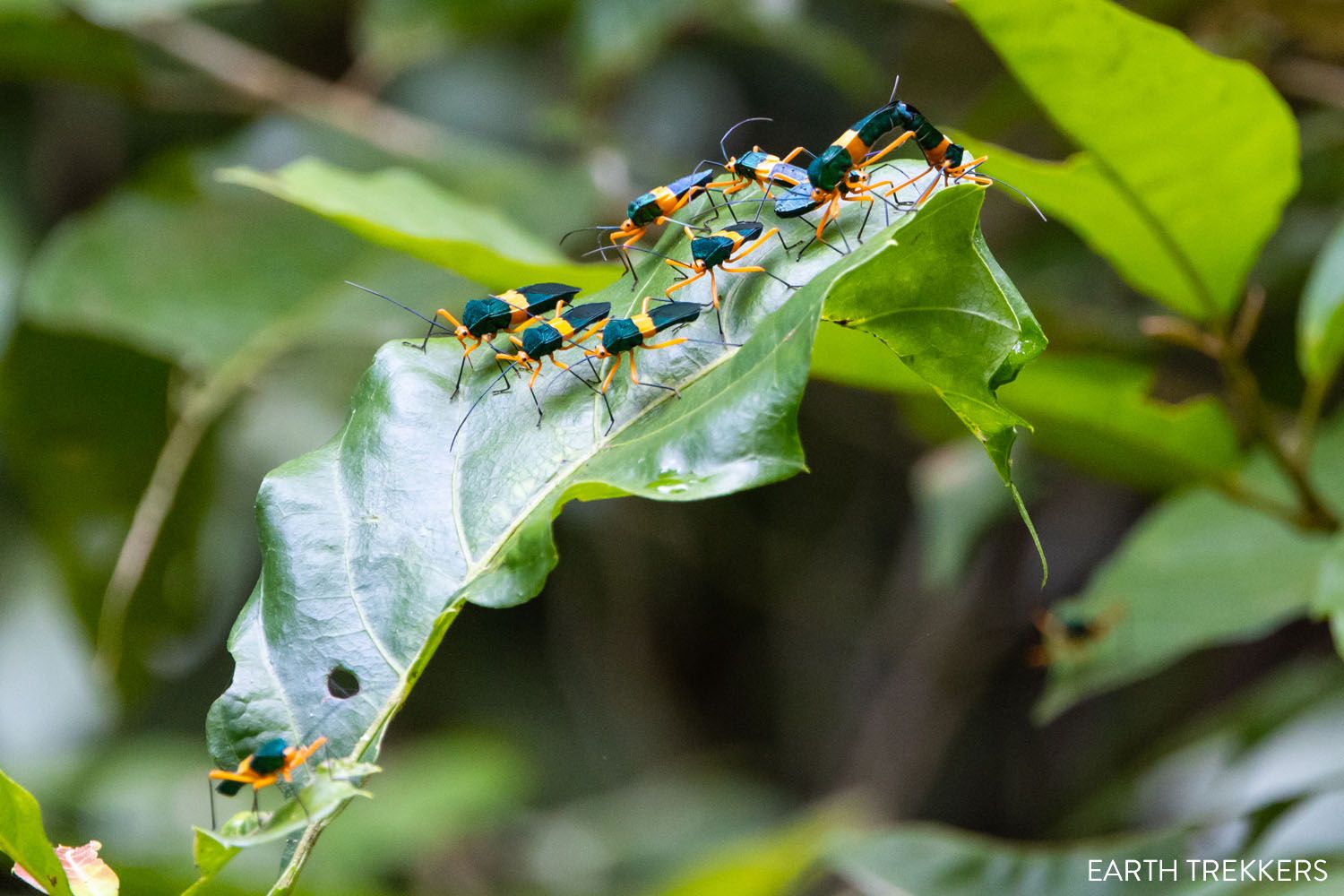
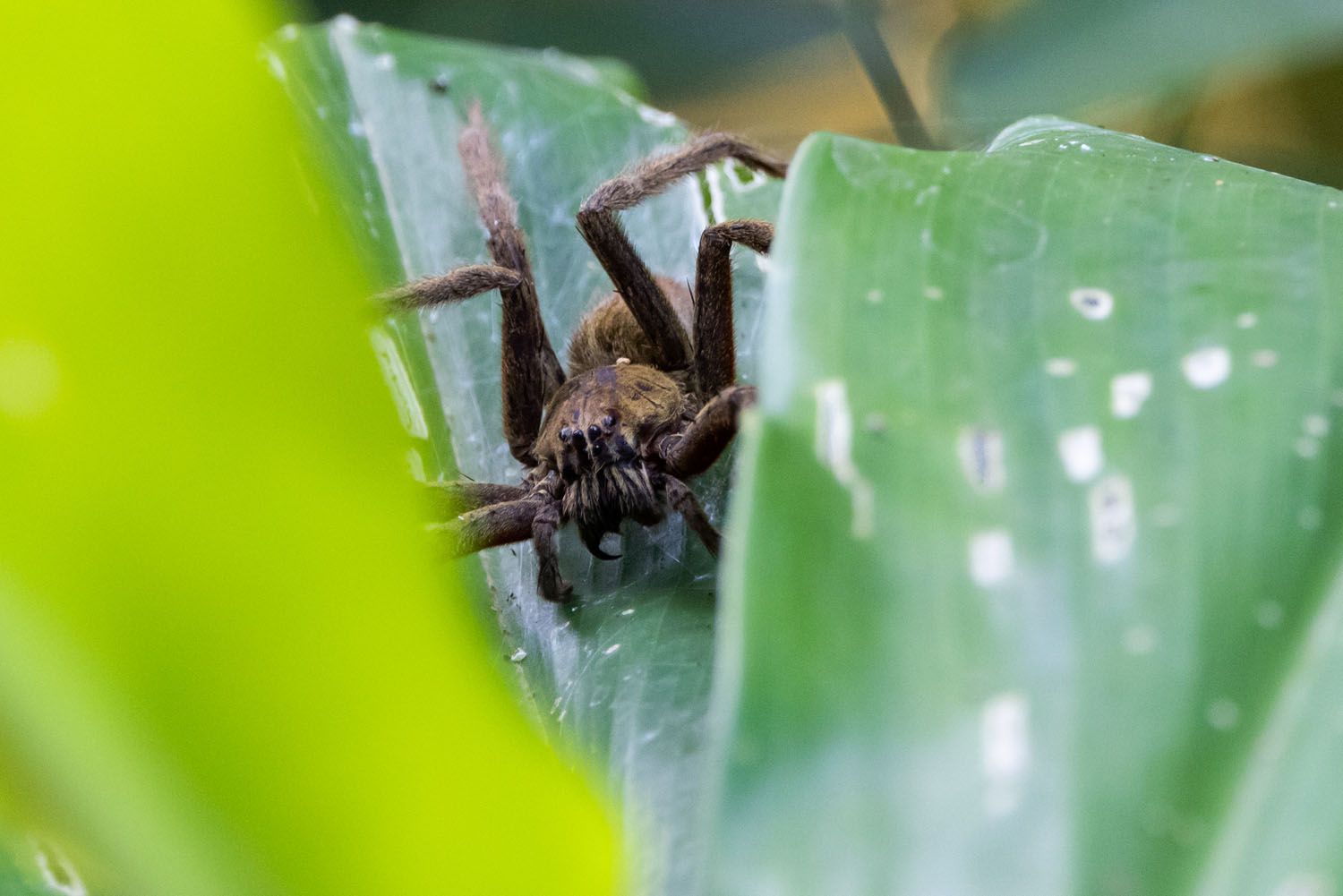
Most guided tours follow the same route through the park. Sendero Principal is the main trail that runs from the entrance into the heart of the park. This wide, flat, dirt trail is commonly filled with tour groups and their guides first thing in the morning. A good chunk of your time will be spent here.
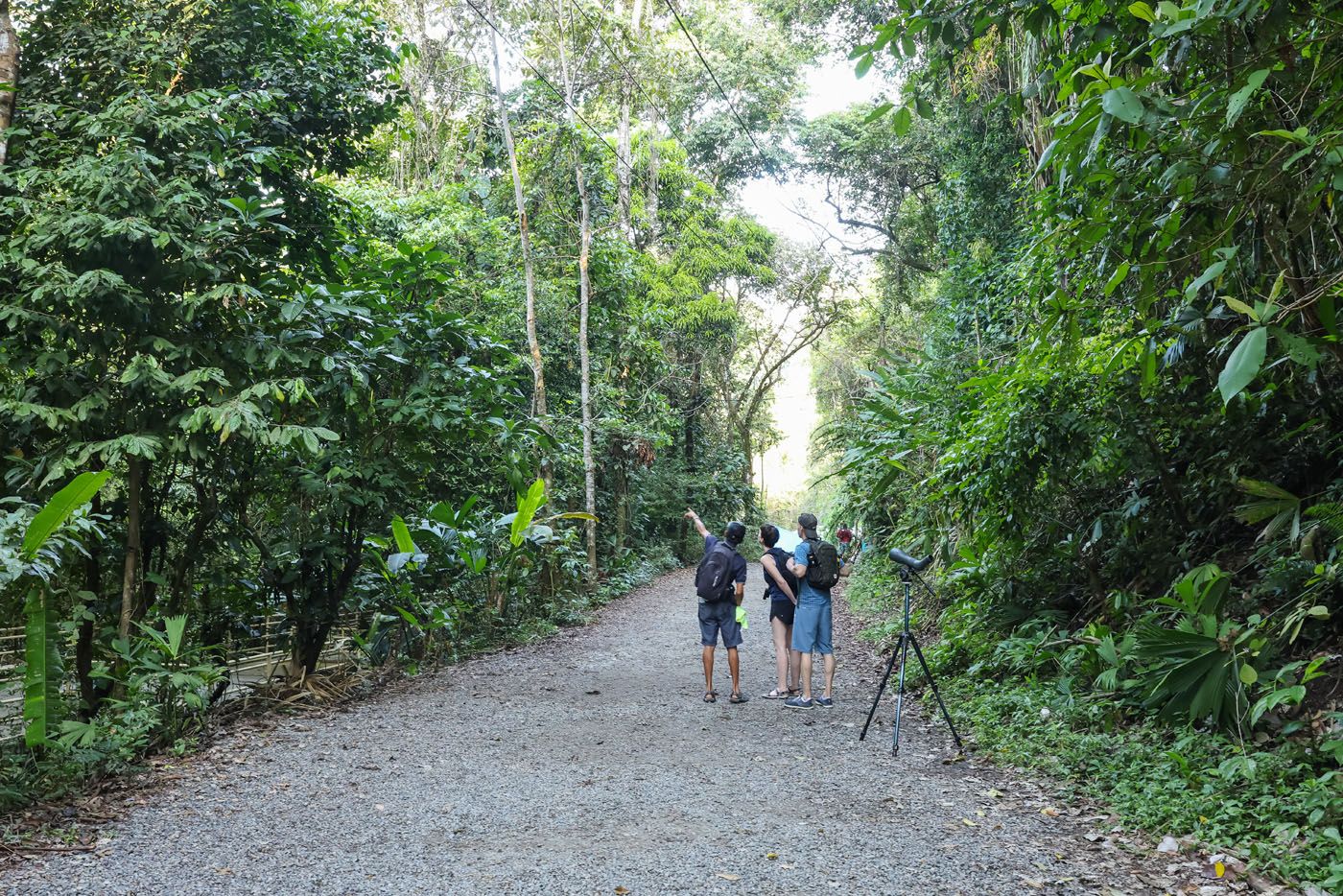
Sendero Principal
This path runs to Manuel Antonio Beach. Most tours end here, and then you can explore the park on your own. There is a small, nearby restaurant in the park, plus more beaches and walking trails, if you want to go deeper into the park. We cover those next.
2. Spend Some Time on the Beach
There are several beautiful beaches to visit in Manuel Antonio National Park. After your guided walk, one of these would be the perfect place to spend a few hours, either lounging under a palm tree or swimming in the crystal-clear water.
Manuel Antonio Beach
This gorgeous beach is the also the park’s most popular. This beach is part of a protected cove, surrounded by lush hillsides and rocky outcroppings. It can be a busy spot midday into the early afternoon, and if you like the idea of a quieter beach, take a look at the next ones.
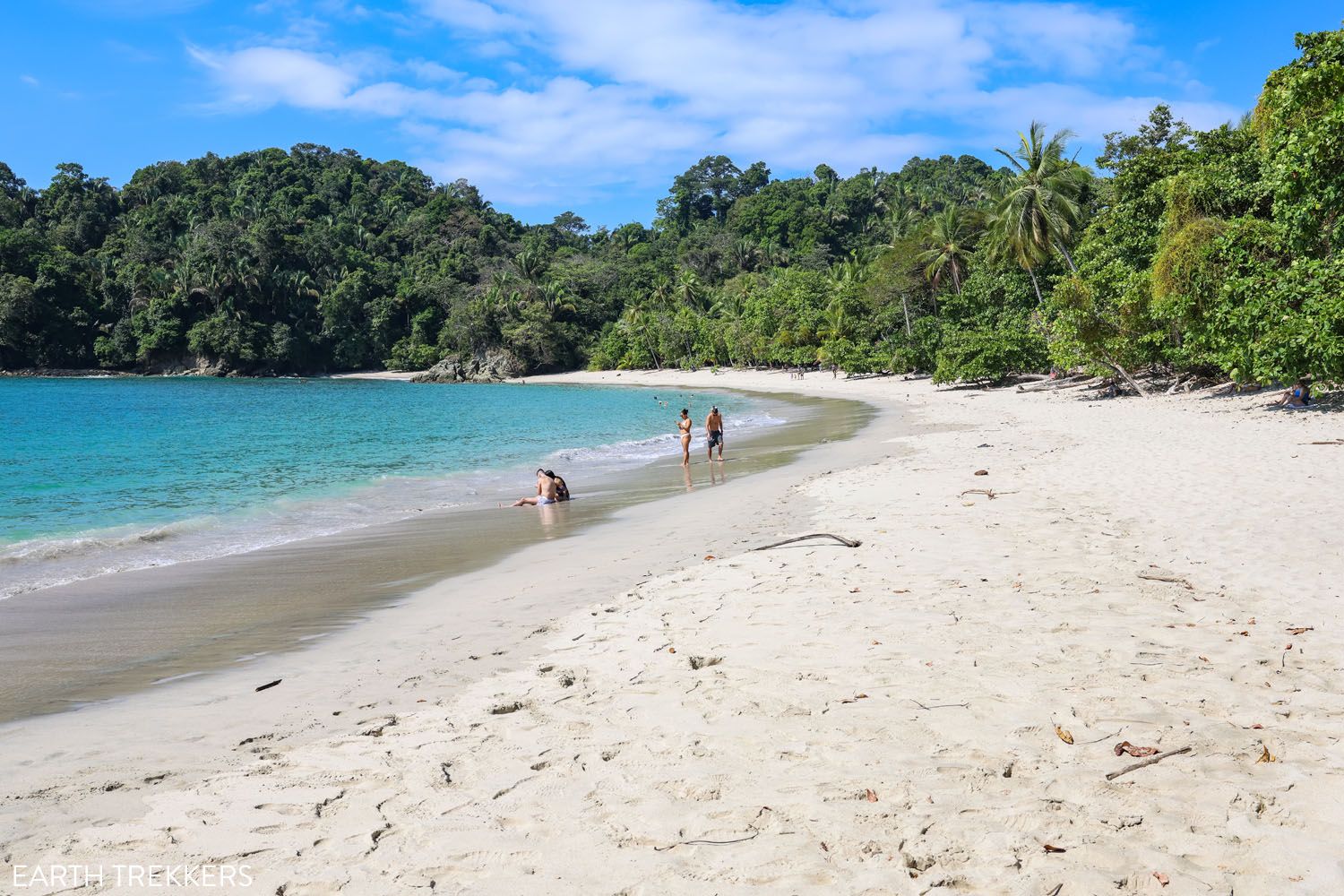
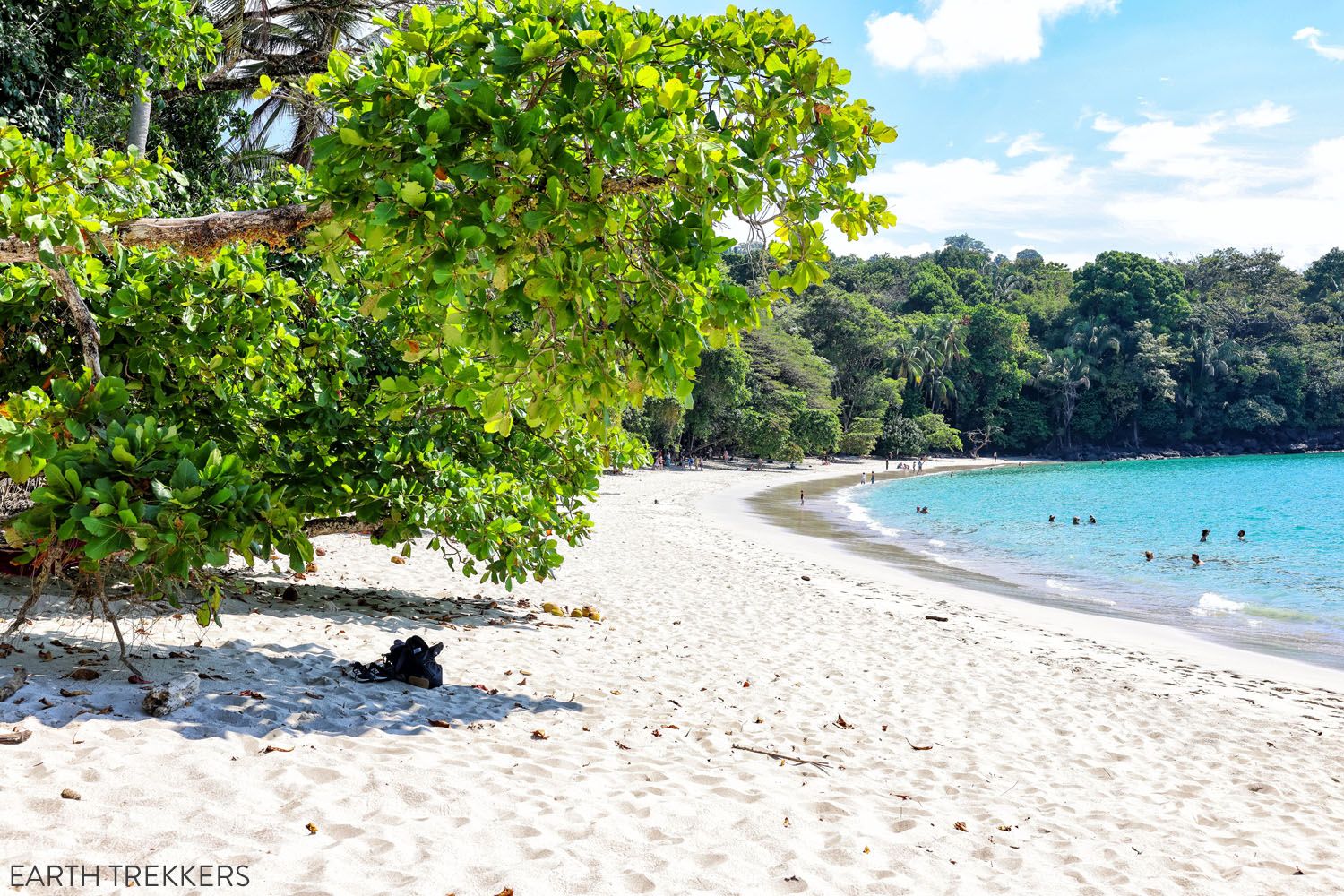
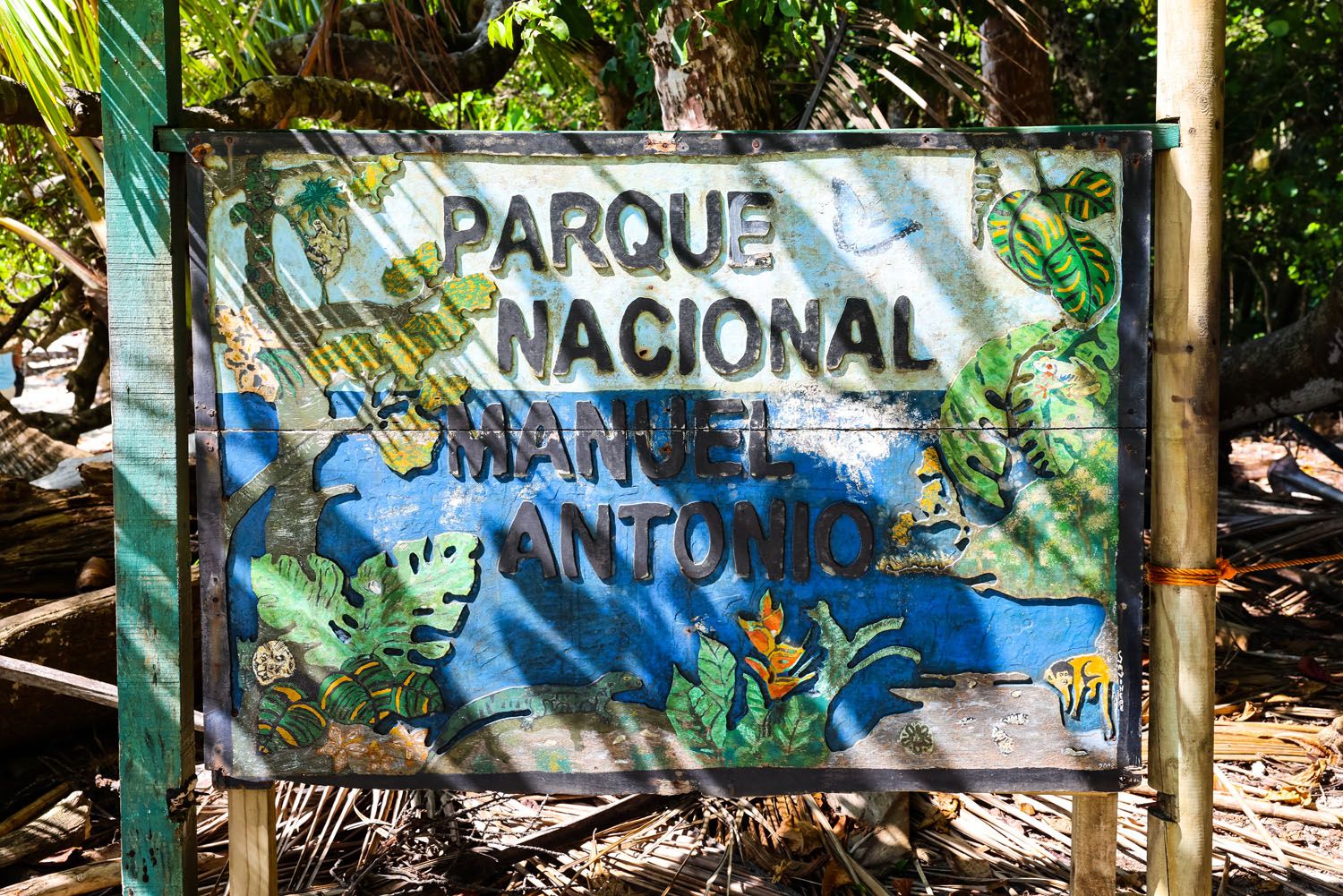
Playa Espadilla Sur (Espadilla South Beach)
This long stretch of white sand sits on the opposite side of the tombolo from Manuel Antonio Beach. It is a larger beach than Manuel Antonio and almost as beautiful. On our visit, there were far fewer people here. Since it is not in a protected cove, currents here can be strong, so Manuel Antonio Beach is better for swimming.
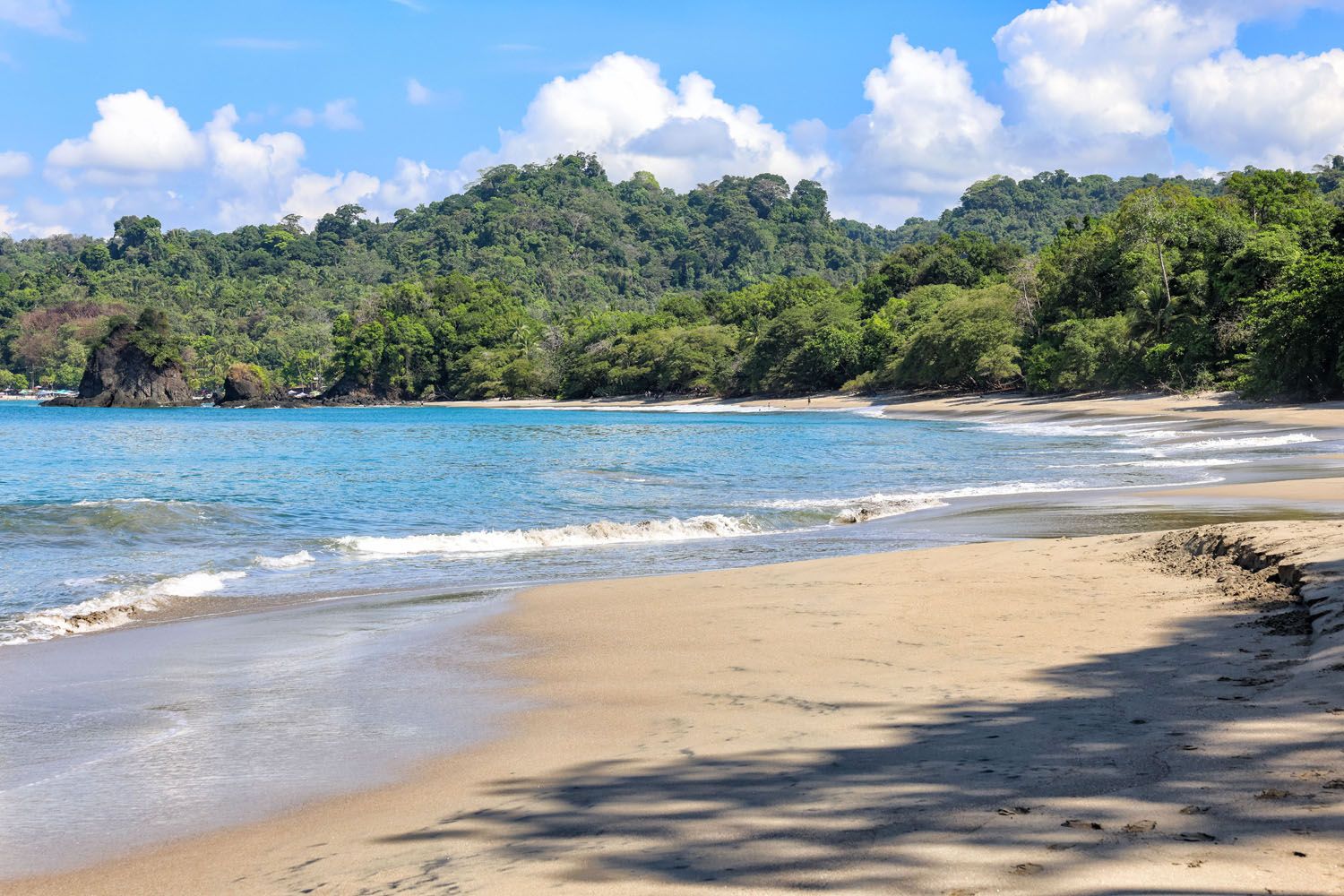
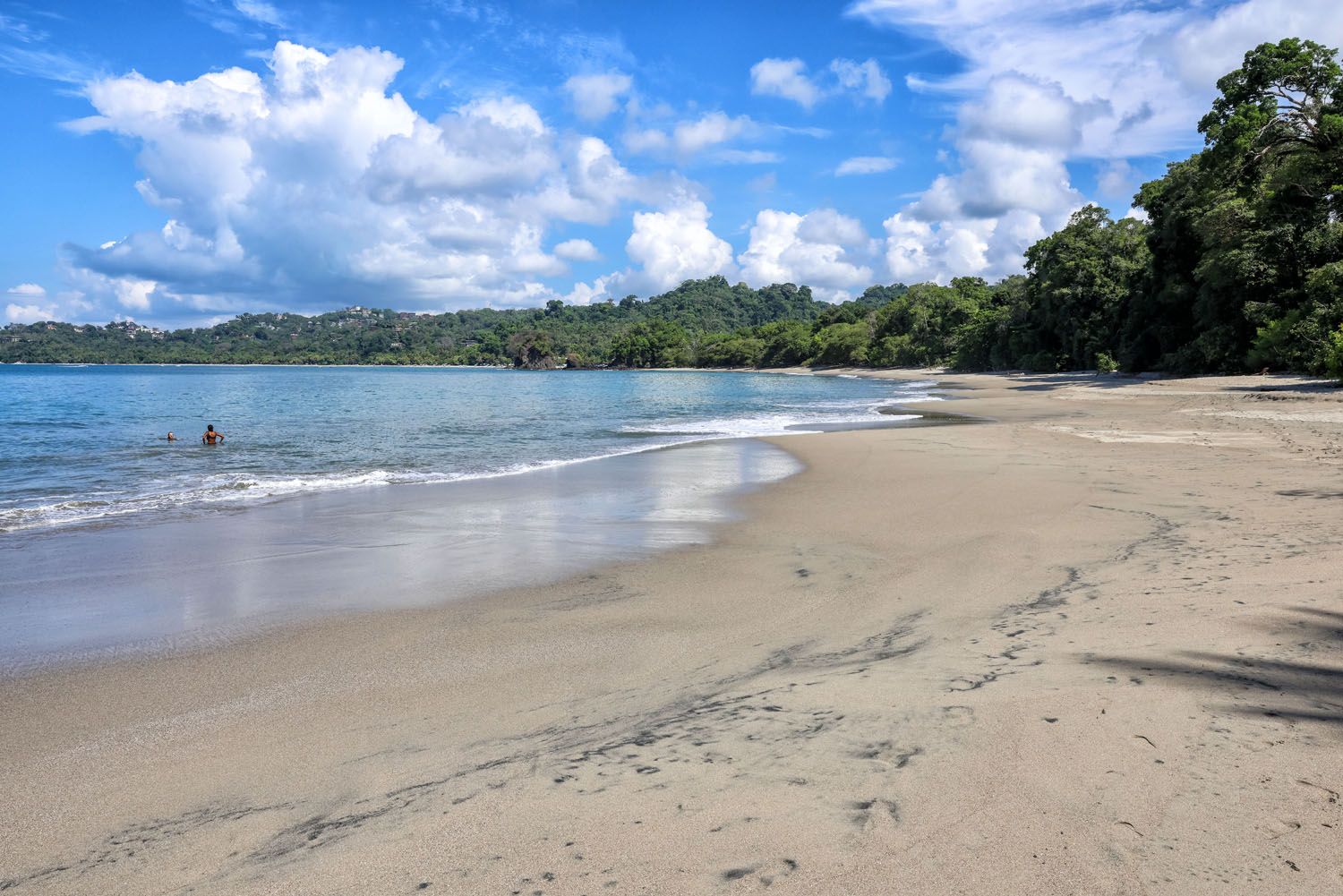
PRO TRAVEL TIP: Do not sit under a Manzanillo tree, which can be found on Playa Espadilla Sur. These trees are poisonous. We cover this in more detail later in this guide, plus provide a photo, so you know what to look for.
Playa Las Gemelas & Playa Escondido
These beaches take a little extra walking to get to. From the park restaurant there is a short network of trails that lead to these two beaches. Playa Las Gemelas is the closer of the two (about a 10 to 15-minute walk from the restaurant) and it is a lovely, small beach in a protected cove. From this beach, you look out to the rugged coastline.
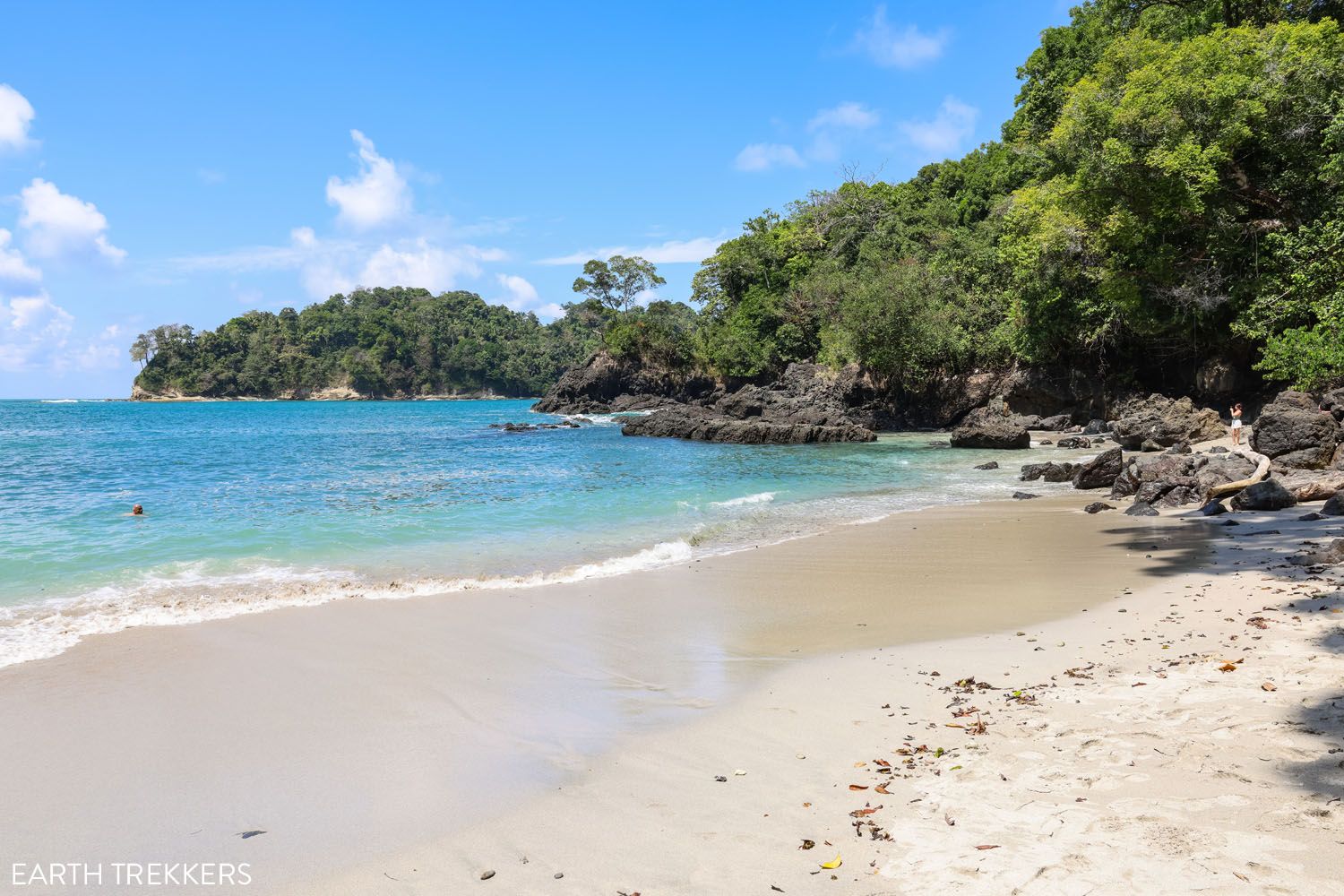
Playa Las Gemelas
On our visit, the trails to Playa Escondido were closed, with no information about when they would reopen.
PRO TRAVEL TIP: The beaches close at 3 pm, to allow ample time to walk out of the park. The park closes at 4 pm.
3. Hike a Trail or Two
Manuel Antonio is a small park, with about a total of 8 km/5 miles of trails.
Sendero Principal
Sendero Principal is a 2.2 km trail that runs from the entrance to the restaurant and continues to Manuel Antonio Beach. There are actually two trails that run side-by-side, a wide, dirt road and a series of narrower trails with bridges. Most tours of Manuel Antonio will spend a lot of time on this trail, as everything from howler monkeys to sloths can be spotted here.
This is a mostly flat walk, with one hilly section between the restaurant and Manuel Antonio Beach.
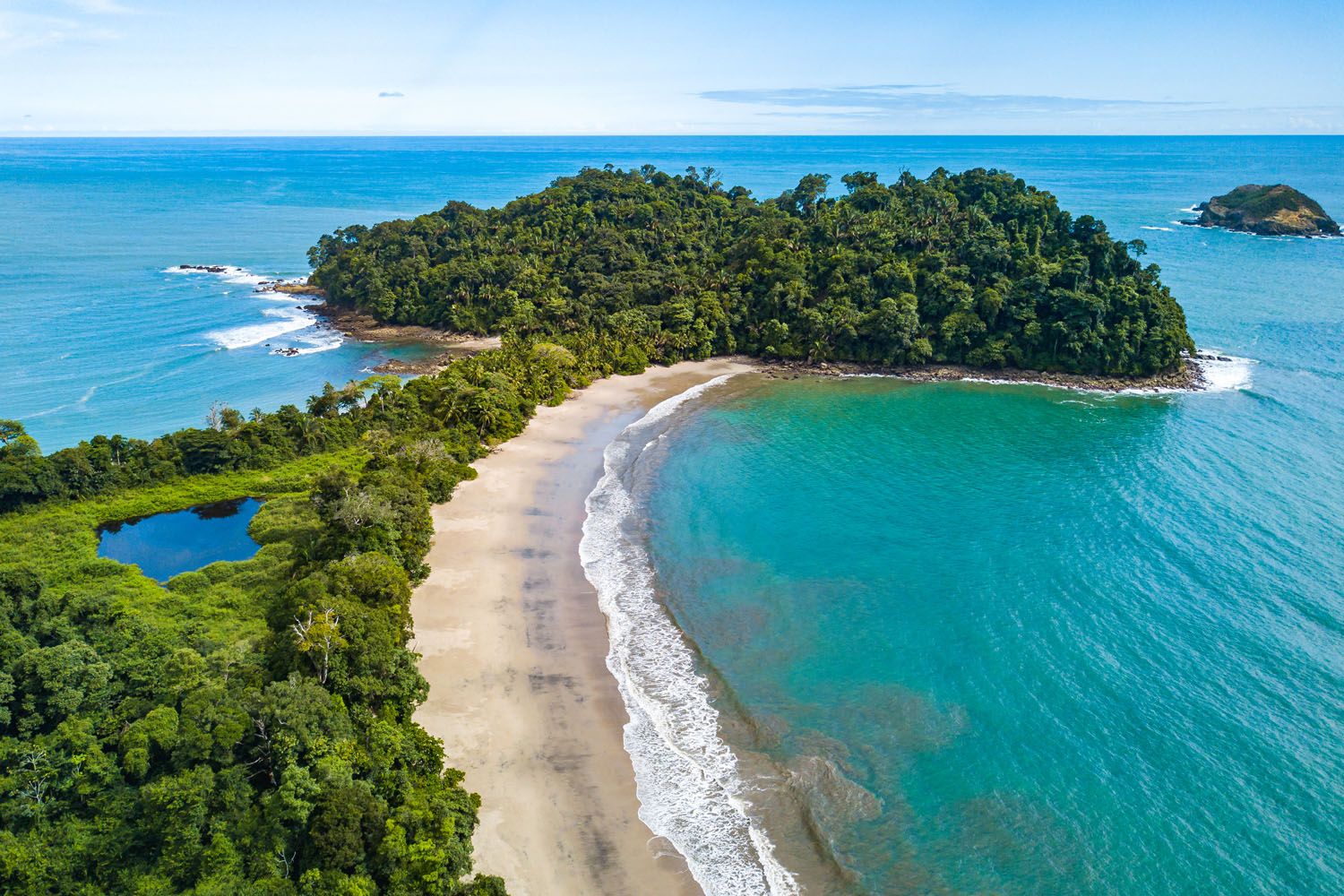
Aerial view of Manuel Antonio National Park, with Playa Espadilla Sur, El Tómbolo, and Cathedral Point | shutterstock.com
Punta Catedral Trail
Punta Catedral Trail is a 1.4 km/0.9 mile that makes a loop on Cathedral Point, the rocky, hilly island at the end of El Tómbolo (the isthmus made up of Manuel Antonio and Espadilla Sur beaches, photo above ↑).
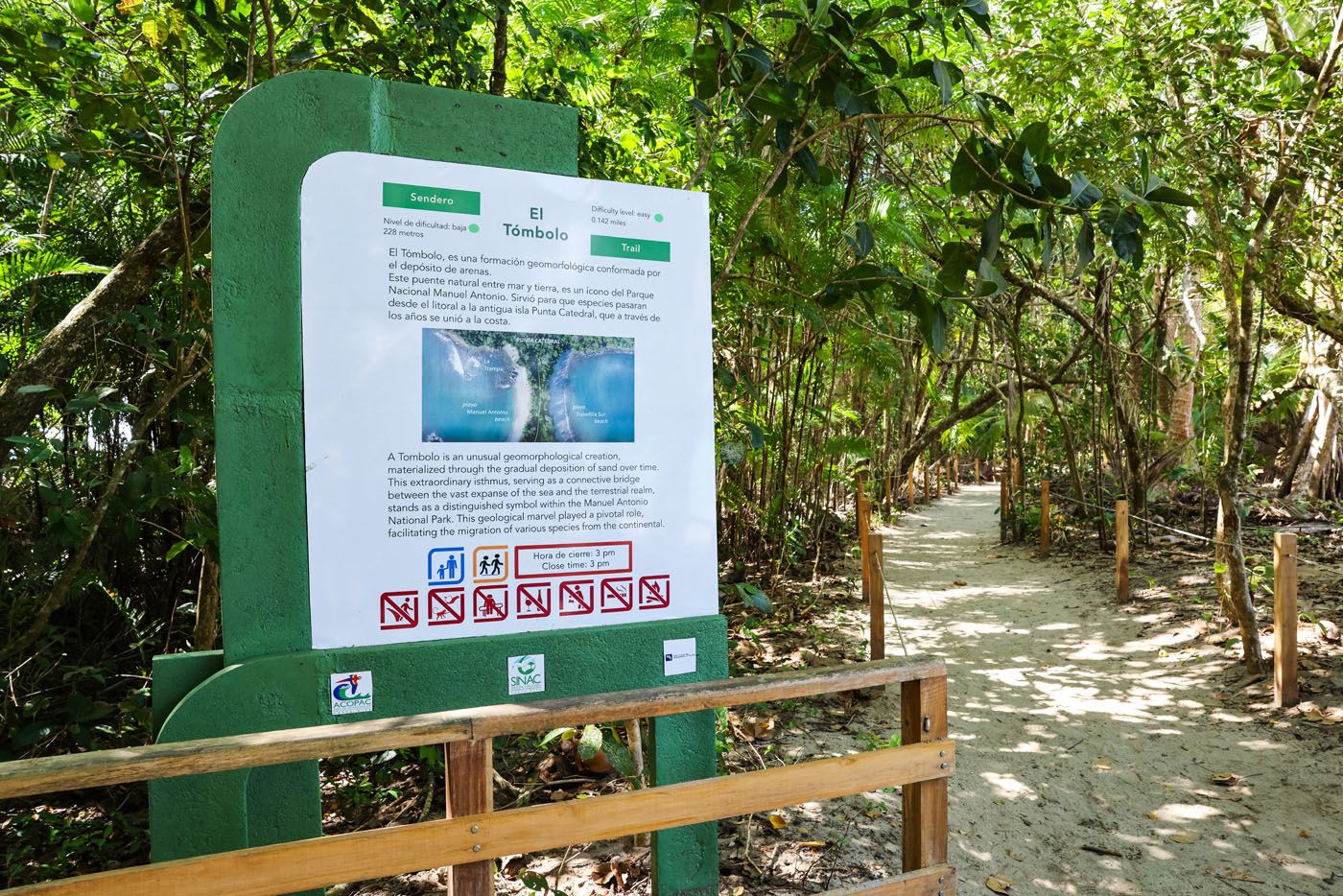
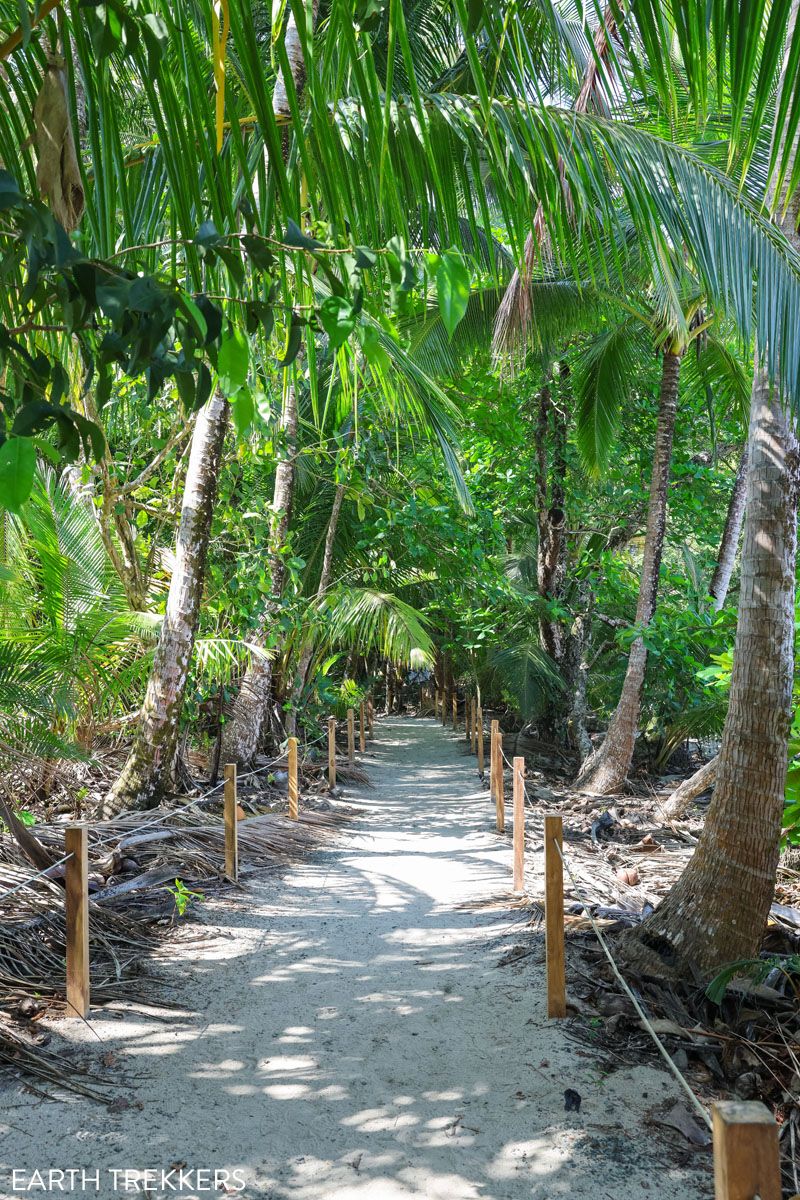
The sandy trail on El Tómbolo
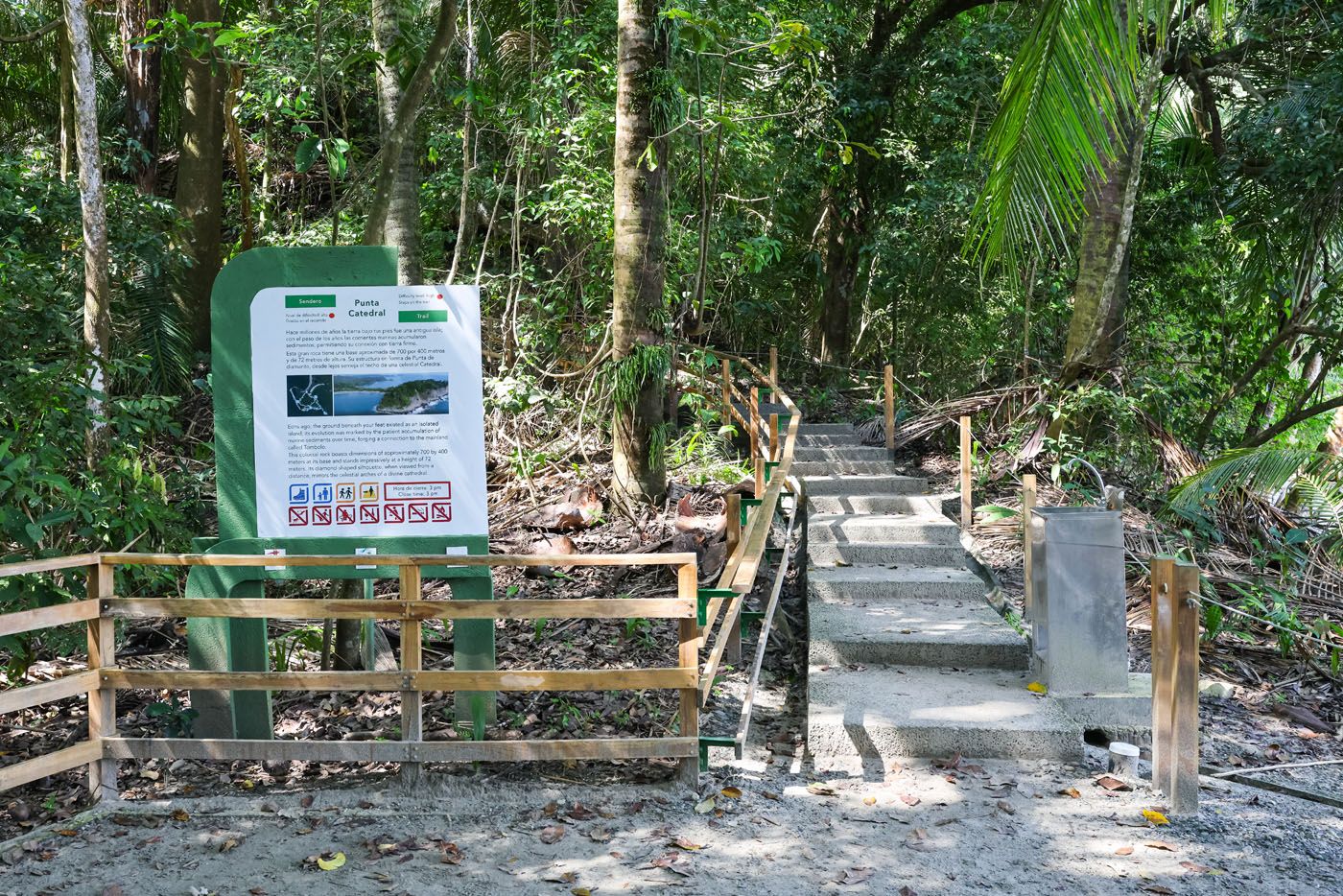
Start of the Punta Catedral Trail
This is a very hilly trail, with lots of sections of steep steps. The trail is paved the entire way, but you will have quite a bit of elevation gain, especially at the first half of the hike, as you climb up the hillside.
There are several viewpoints along the trail, with views of nearby islands, interesting rock formations, and Manuel Antonio Beach. It’s worth it to walk out to La Trampa, a small beach that has archaeological remains of a fishing trap.
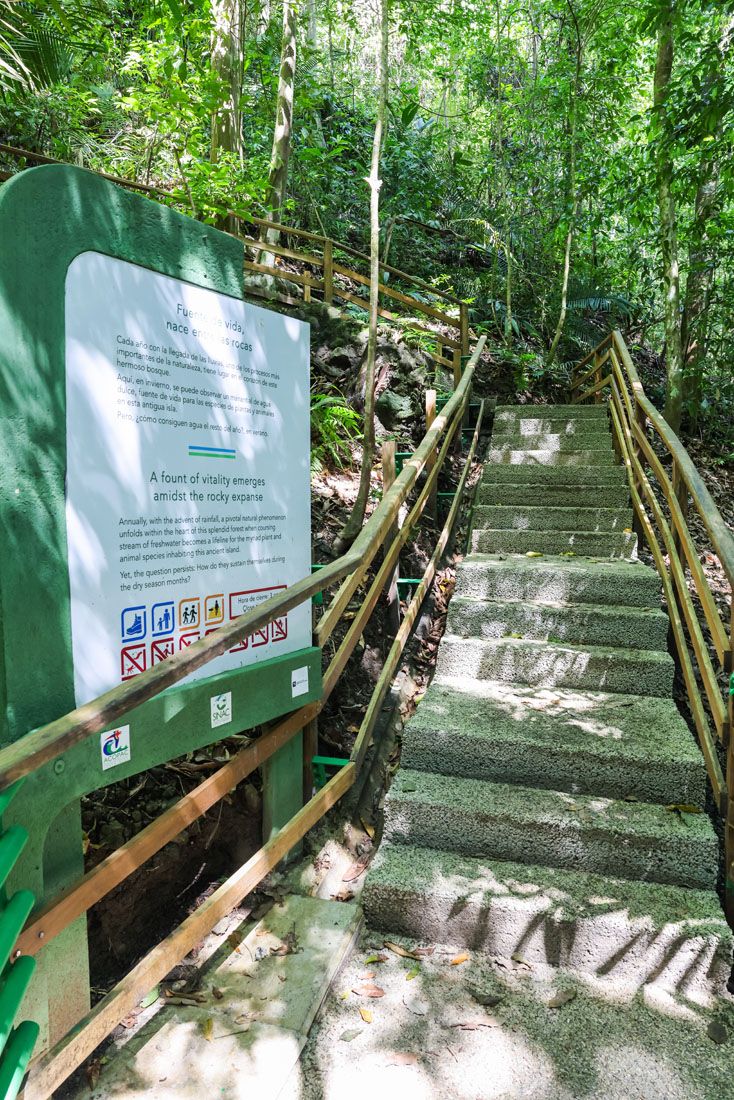
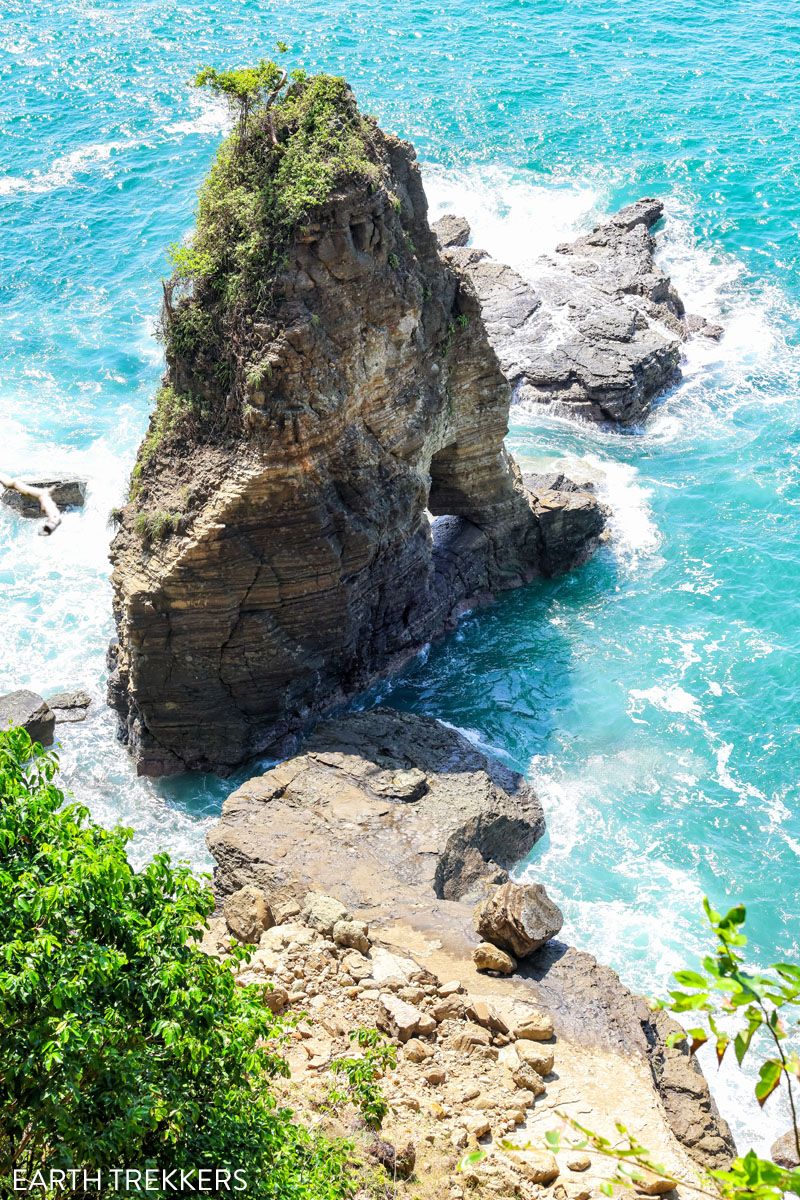
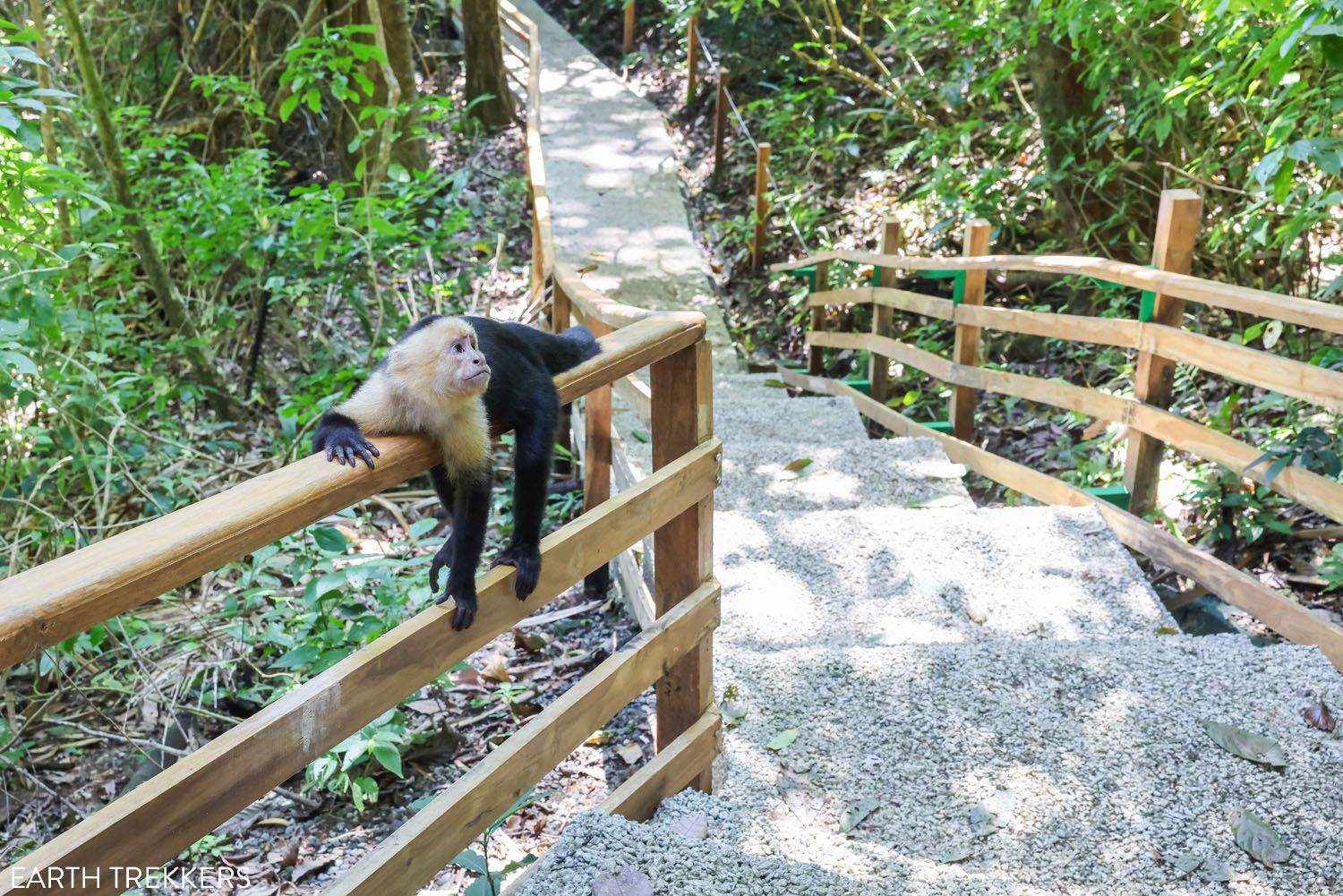
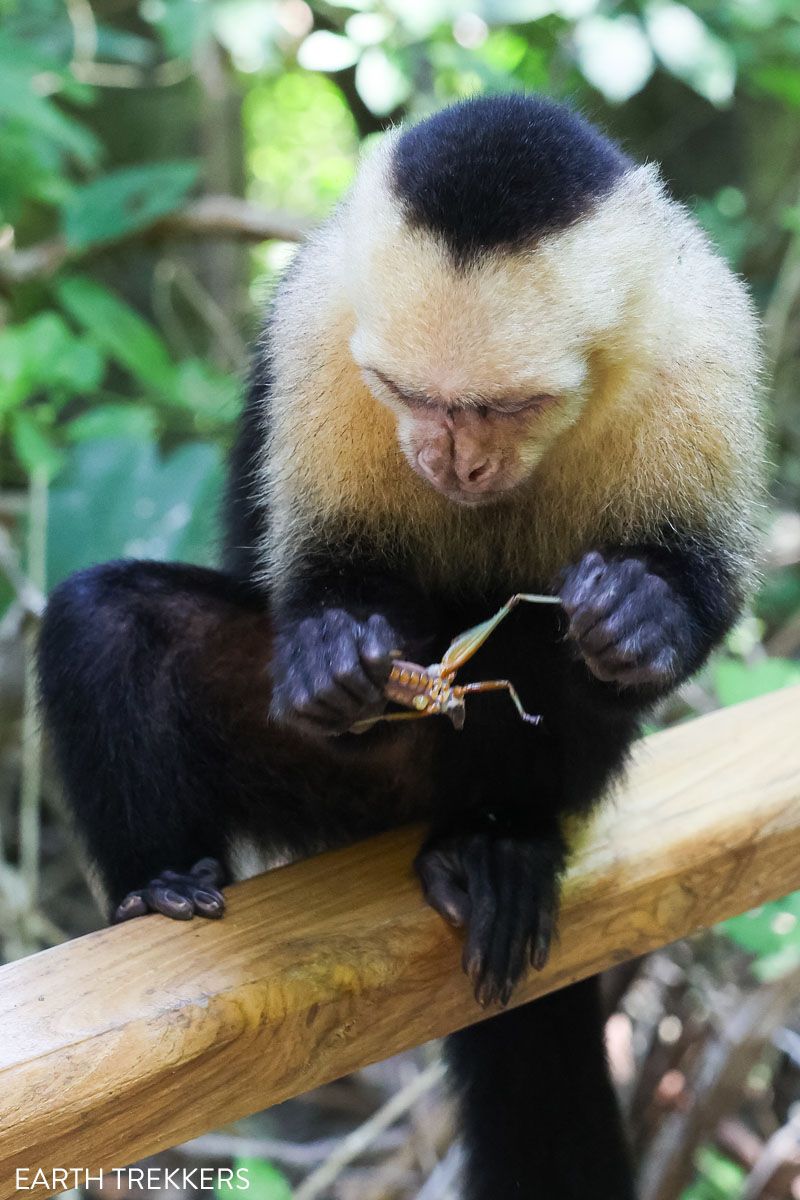
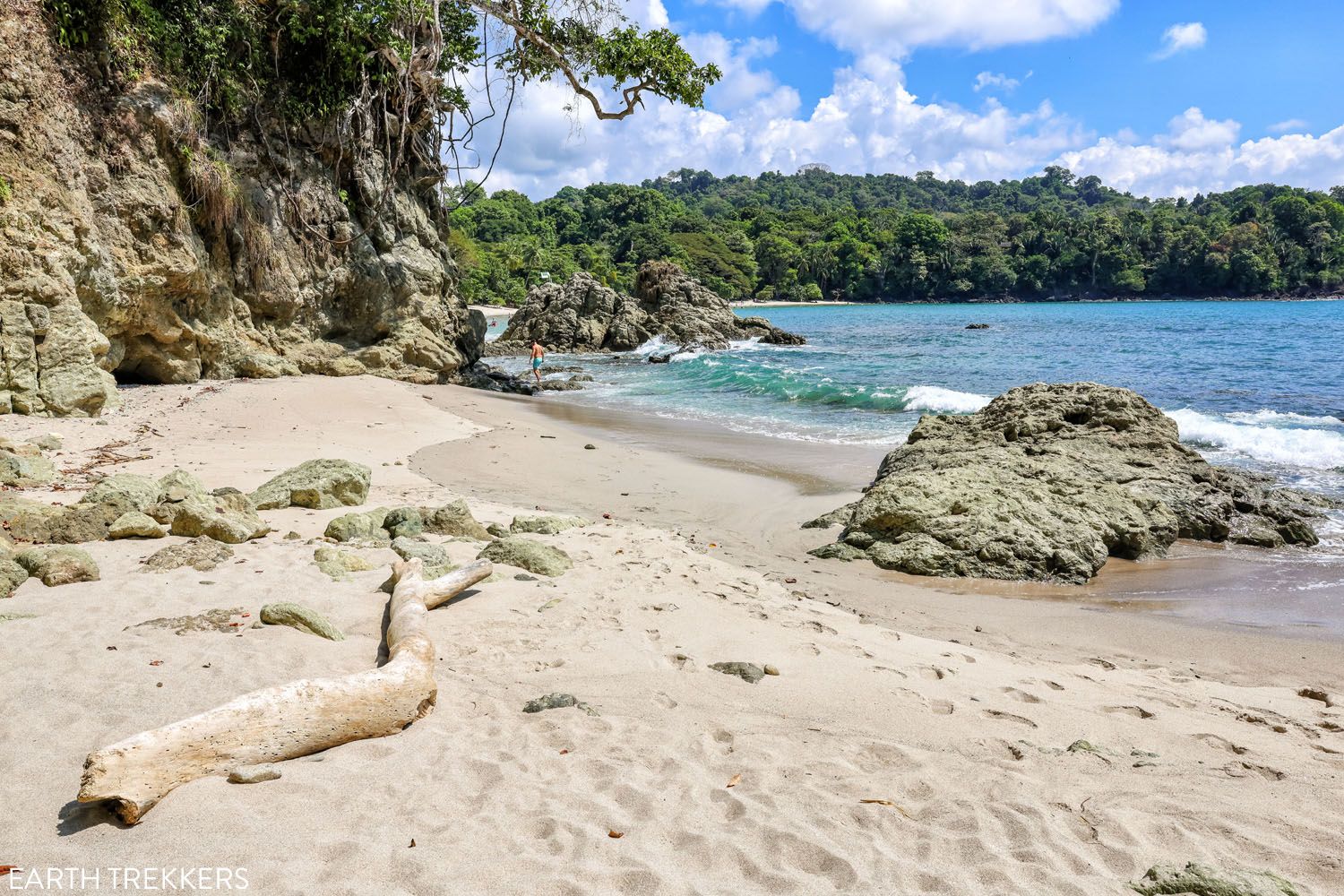
La Trampa
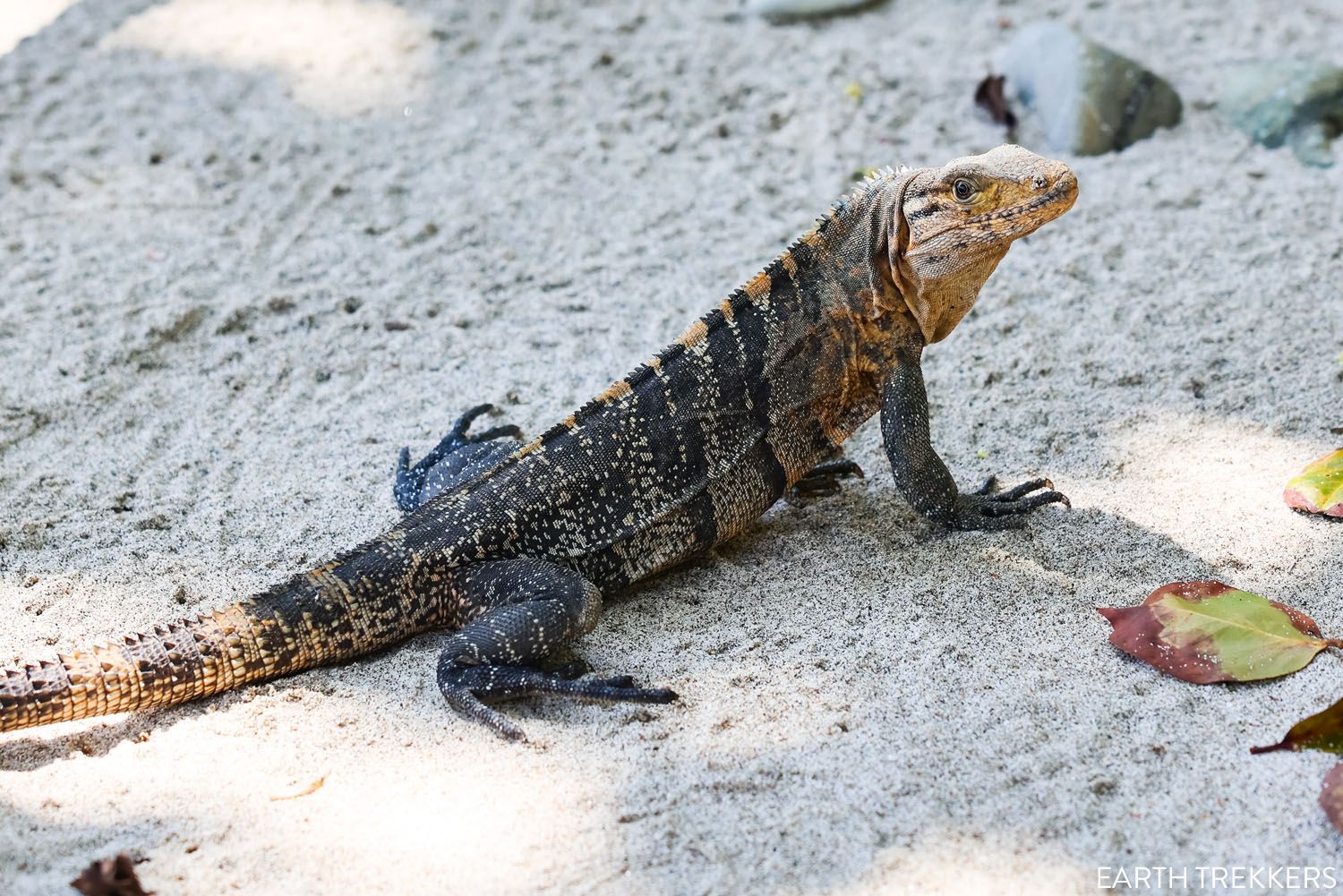
An iguana on the beach
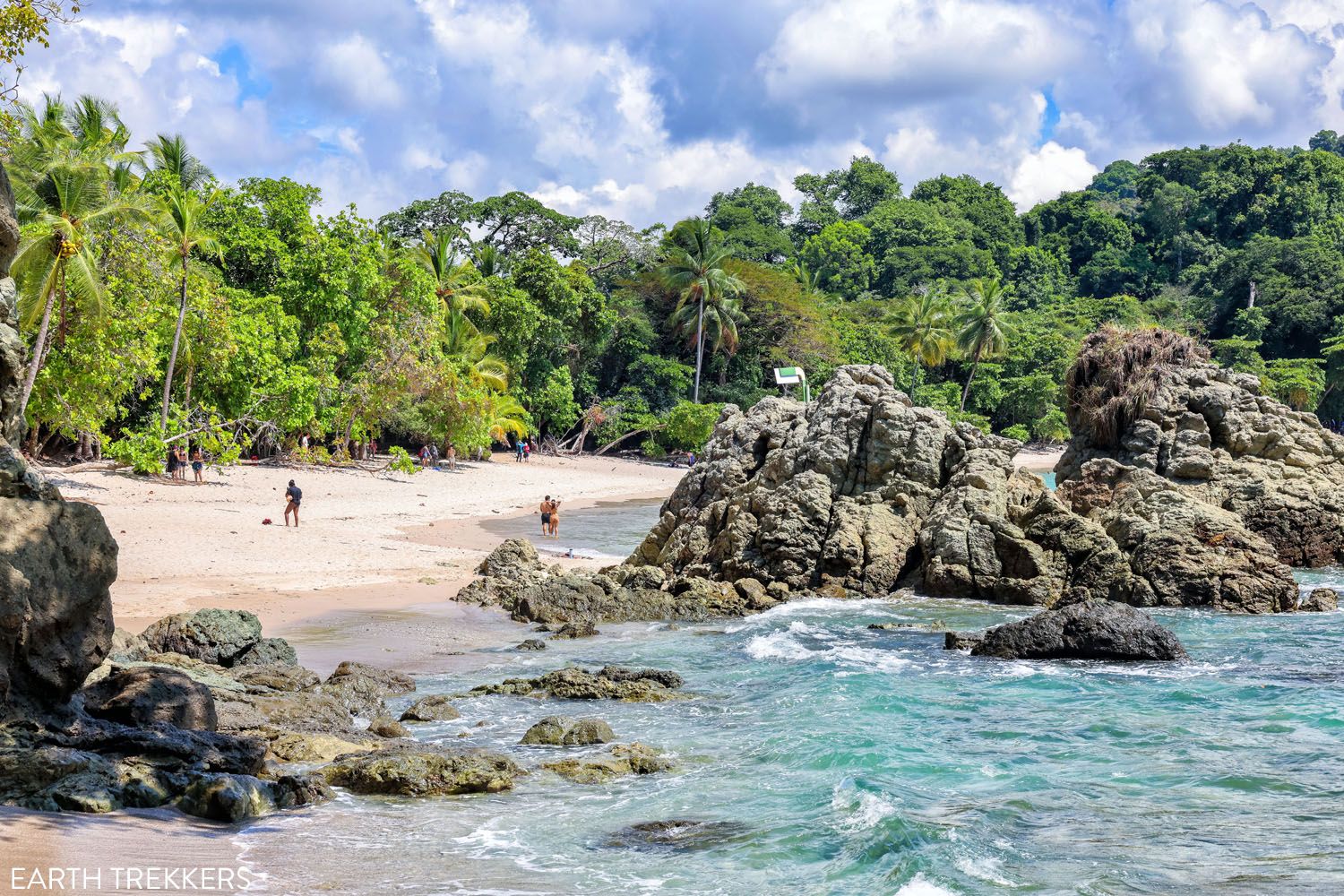
The view of Manuel Antonio Beach from La Trampa
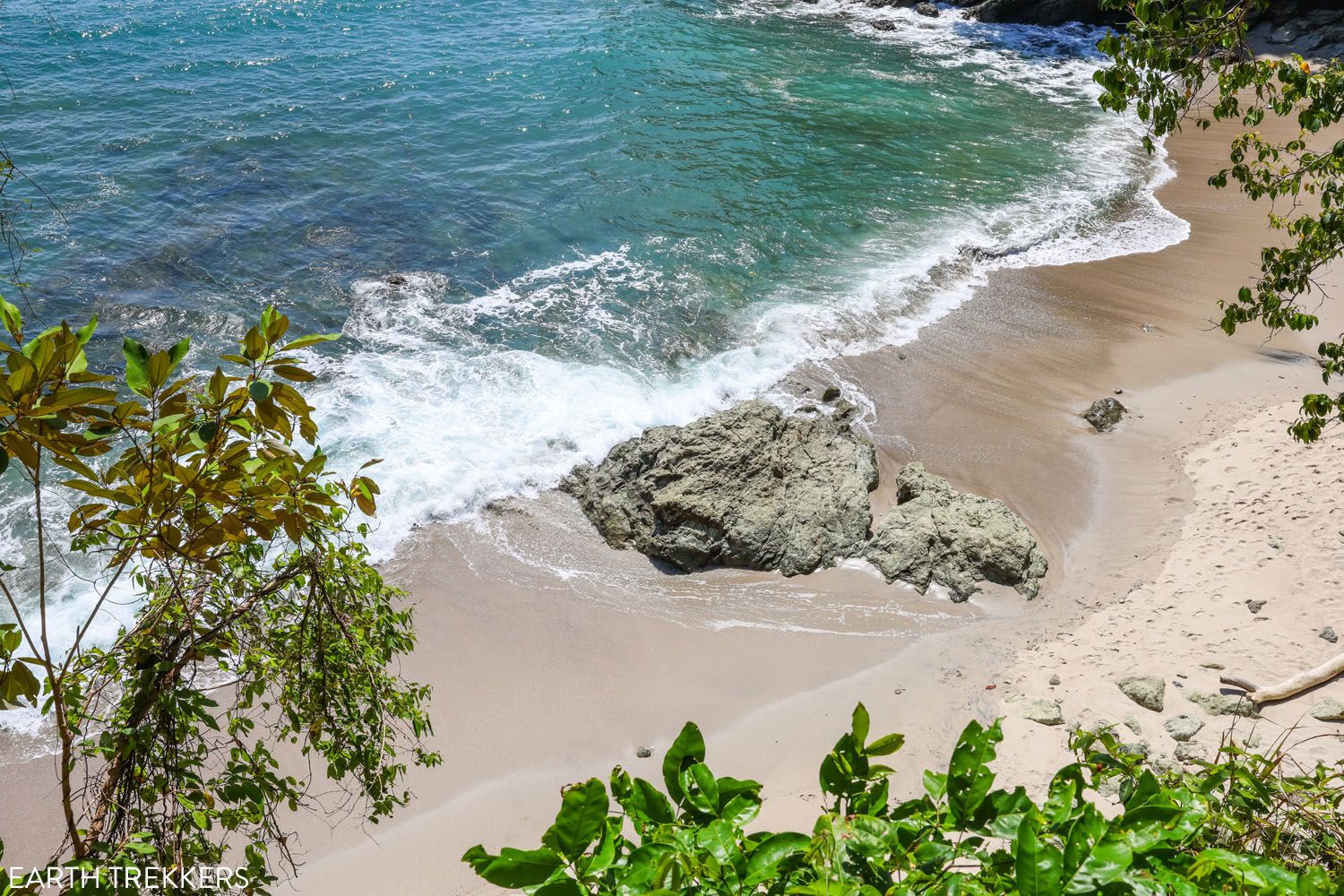
There is a nice viewpoint overlooking La Trampa that is worth walking up to. Here is the view.
This walk takes 30 to 60 minutes and is of moderate difficulty. The views and seeing white-faced capuchin monkeys were the highlights for us.
Purchasing Your Tickets
Tickets to Manuel Antonio National Park must be purchased online in advance. They are not sold at the entrance booth. And since they sell out, sometimes several weeks in advance, purchase yours once you know your dates of travel.
Manuel Antonio National Park is one of several Costa Rican national parks that require an advance ticket purchase through the SINAC website. If you also have plans to visit Poas Volcano National Park or Tenorio Volcano National Park, you’ll use the same website. SINAC is the official government website that manages the national parks.
Here is the link to purchase your tickets. The first time you use the site you will have to set up an account. Then select the park from the drop-down menu and your dates of travel to see the available time slots. You can reserve tickets very far in advance (when writing this up in March, I could make a reservation for December).
When purchasing tickets online, you will have to input your names and passport number. When you visit Manuel Antonio National Park, you are asked to bring your passport with you.
Do You Need a Guide?
With so many guides walking through the park, pointing their scopes into the trees, you might think you wouldn’t need to hire a guide. Why not just look where they are looking?
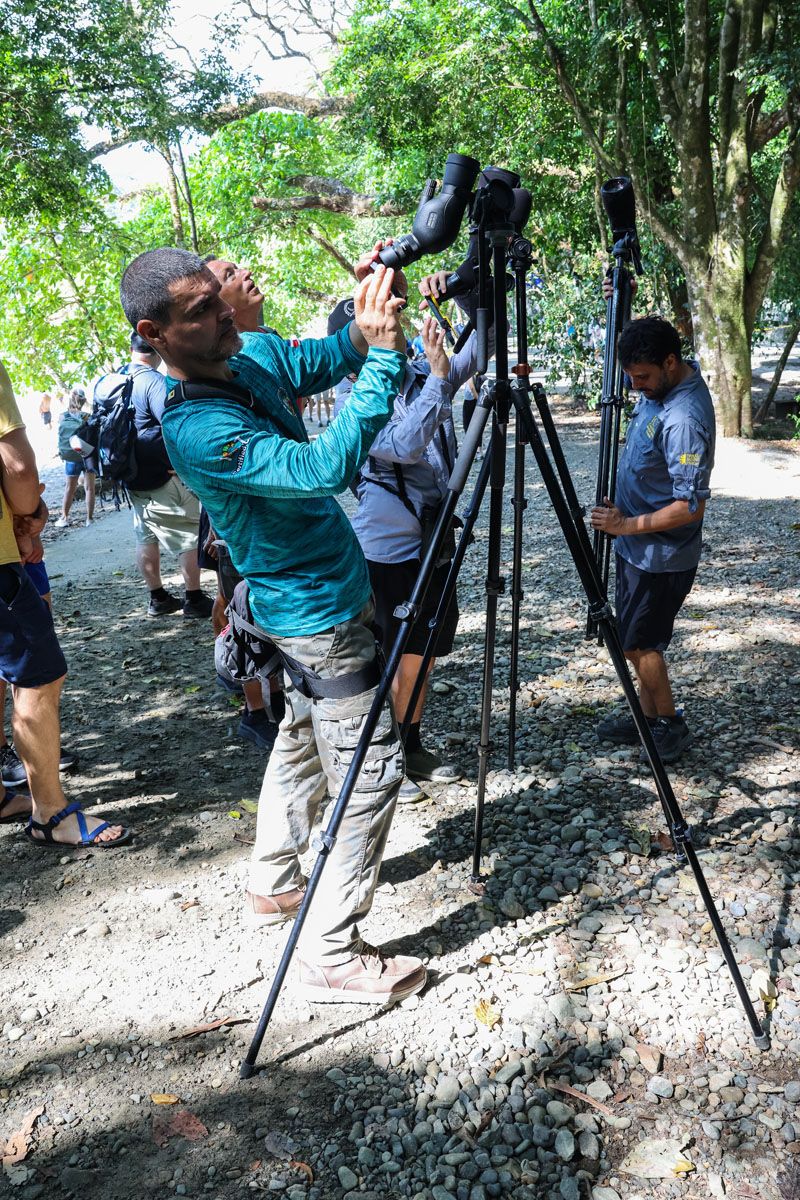
We quickly learned that the wildlife can be almost impossible to spot. These animals have evolved to camouflage themselves in the trees, a skill that works exceptionally well. It wasn’t until we looked through the guide’s scope, that we could then identify the sloth/monkey/bat/bird in the tree.
Even with a 500 mm telephoto lens, we had a very hard time spotting the wildlife, before seeing it on the guide’s scope.
Hiring a guide is worth every penny. Without one, there is a good chance you’ll see very little, at least when it comes to wildlife.
Plus, it’s possible to photograph the animals using your smartphone and your guide’s scope. Our guide took some incredible photos through his scope. This can be a lot cheaper than buying or renting high-powered camera equipment.
We walked around with a Canon R5 Mark II (amazing at homing in on wildlife with its AI feature) and a 100-500 mm lens, and in some cases, our guide still got better photos with his smartphone + scope combo.
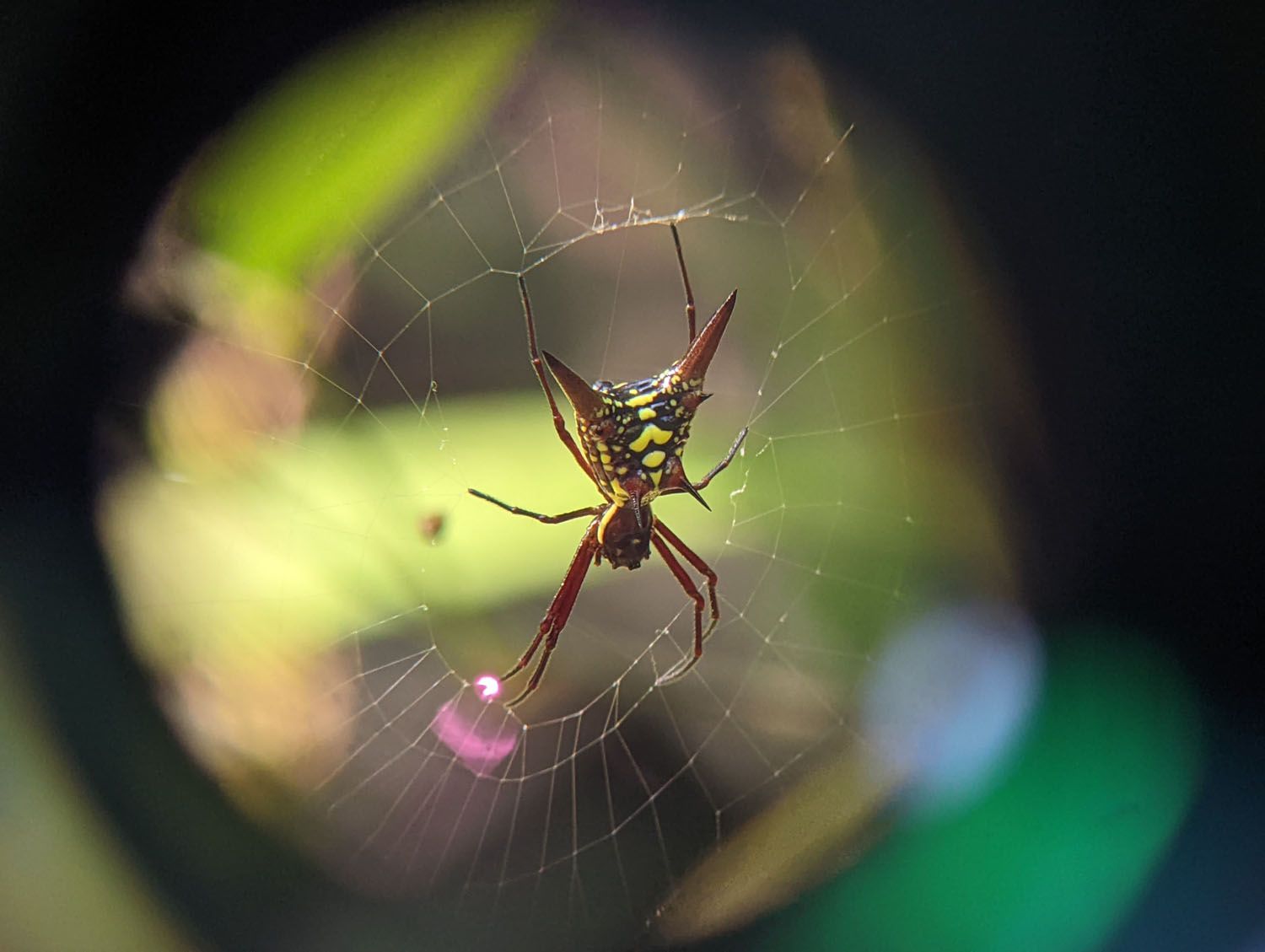
Our guide took this photo with his smartphone and scope.
Guided Tours of Manuel Antonio
We took this 2-hour guided tour of the park and had a fantastic experience. Our guide not only spotted lots of wildlife, but we learned quite a bit on the tour.
During the checkout process, it gave us the option to pay a little extra for the flexibility to cancel up to 1 hour before the tour starts. We did this just in case there were any delays with getting to Costa Rica, since we flew into San Jose and drove to Manuel Antonio the day before. Note: We also had to purchase our entrance tickets into the park separately.
We did it as a private tour. Our guide took some fantastic photos with his phone and HD scope, which he sent to us after the tour. Since we had such a great experience, we highly recommend this tour on GetYourGuide.
This is one of the top-rated guided walking tours of Manuel Antonio. It can be done as a small group tour or upgraded to a private tour for an additional fee.
Finally, this 2-hour tour also gets great reviews. The tour includes photos and videos taken by the guide.
Check the fine print. Many guided tours still require you to purchase an entrance ticket separately.
Guided Wildlife Walks
Parking
If you have a car, finding a parking space may be one of the most challenging parts of visiting Manuel Antonio National Park.
Despite the signs you see as you drive down Route 618, the national park does not have an official parking lot. There will be numerous signs advertising “official parking” plus men in fluorescent yellow vests, flashing official-looking badges, all trying to direct you to their private lots.
We parked at Chalo Parking, which the meeting spot for our guided tour of Manuel Antonio National Park. This small parking lot is located next to Restaurante Donde Alex and there is a small fee to park here (cash only).
If this is filled, there is another parking lot next to Hotel Manuel Antonio, on Route 618, just across from the beach. This is also a paid parking lot.
Your hotel may offer a shuttle service to the park. There is a local bus that runs from Quepos to the park entrance. And finally, you can get here by taxi or Uber.
Best Time to Visit the Park
The best time to visit Manuel Antonio National Park is early in the morning, ideally around opening time (7 am). The wildlife is most active this time of day, plus it is the coolest part of the day to visit the park.
When making your ticket purchase and arranging your guided tour, we recommend entering the park as early as possible.
From talking to locals, the park is mobbed between 9 am and noon, and our guide told us that the line to enter can be very long at 9 am, even with timed entry tickets.
In our experience, the park felt busy, but not overly crowded. I think they do a good job limiting the number of visitors every day. We visited Manuel Antonio National Park on a day where tickets were sold out.
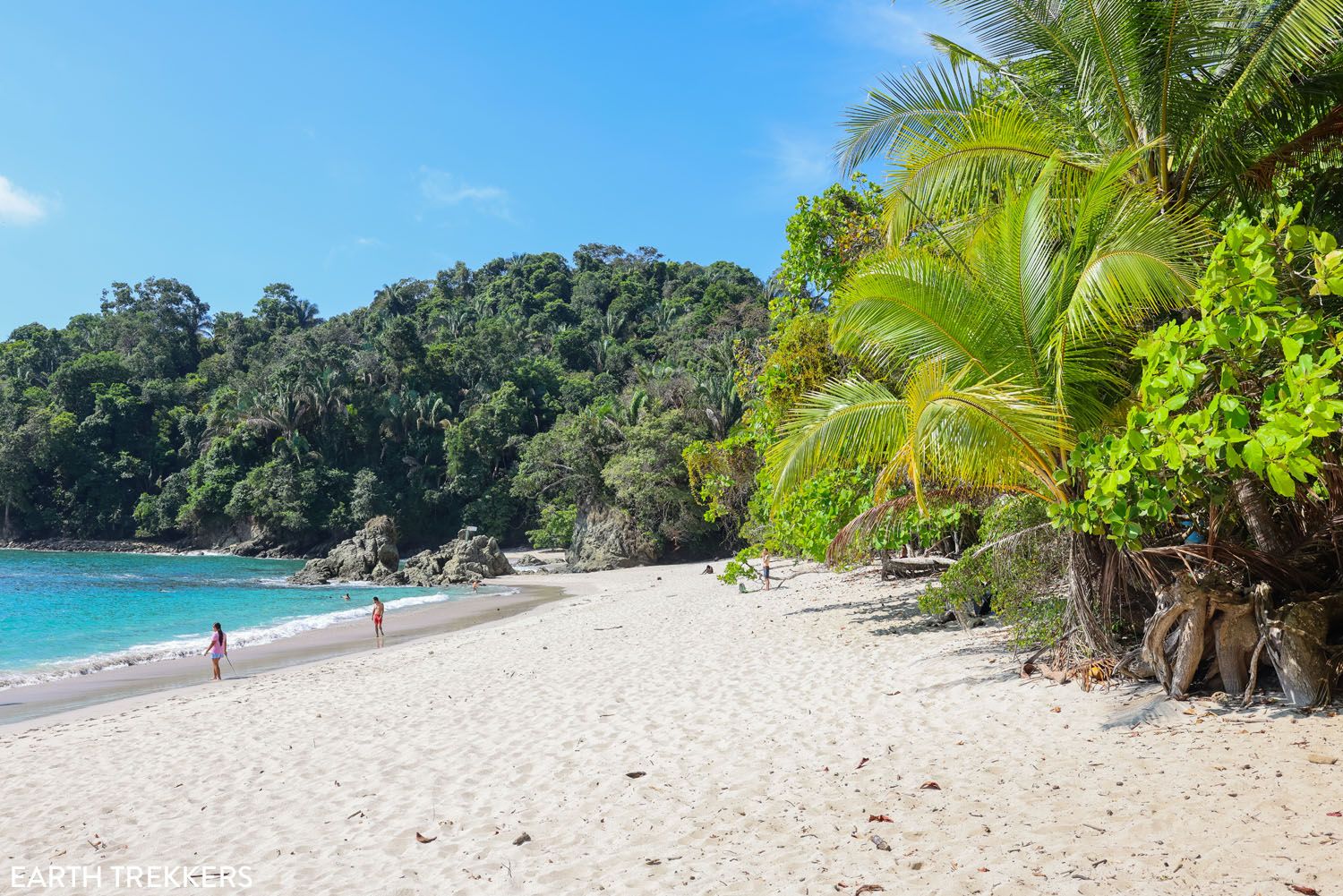
Be Prepared for Hot, Humid Weather
We visited Costa Rica in late February and early March, starting in Manuel Antonio. This was the hottest place we visited in Costa Rica. We also went to Monteverde, La Fortuna, Rio Celeste, Poas Volcano, and San Jose.
During our time in Manuel Antonio, the average high temperature ranged from 29°C/85°F to 32°C/90°F, with a heat index of 38°C/100°F. Coming from Maryland, it took us a few days to adjust to this heat. In the mornings, it still felt relatively cool, making this the best time of day to be more active.
Be prepared for a hot walk out of the park. From the beach, you are looking at a 20-to-30-minute walk to the park entrance and some of this will be uphill. For those with a morning tour time, this walk will most likely be midday or early afternoon.
Make sure you bring a lot of water. There are also water refill stations in the park.
What to Bring into the Park
- A reusable water bottle, filled with cold water; there are water refill stations at several locations in the park
- Passport or a digital copy of your passport
- Camera and/or smartphone
- Sunscreen
- Sunglasses
- Hat
- Swimsuit and towel if you plan to visit a beach
We wore shorts, a T-shirt, and hiking shoes. Sturdy sandals also work well. In the morning before getting to the park, I applied insect repellent (Picaridin lotion by Sawyer), but Tim did not. We had no issues with mosquitoes in the national park, but in the evenings in Manuel Antonio, we both got a few mosquito bites.
Things NOT to Bring
- Single use plastic bottles (with the exception of sunscreen)
- Food or beverages of any kind, except for water (no snacks, no sandwiches, you can’t even bring chewing gum…your bags will be searched at the park entrance)
- Pets
- Beach gear (umbrellas, tents, balls, etc.)
- Alcohol or cigarettes
- Drones
- Firearms
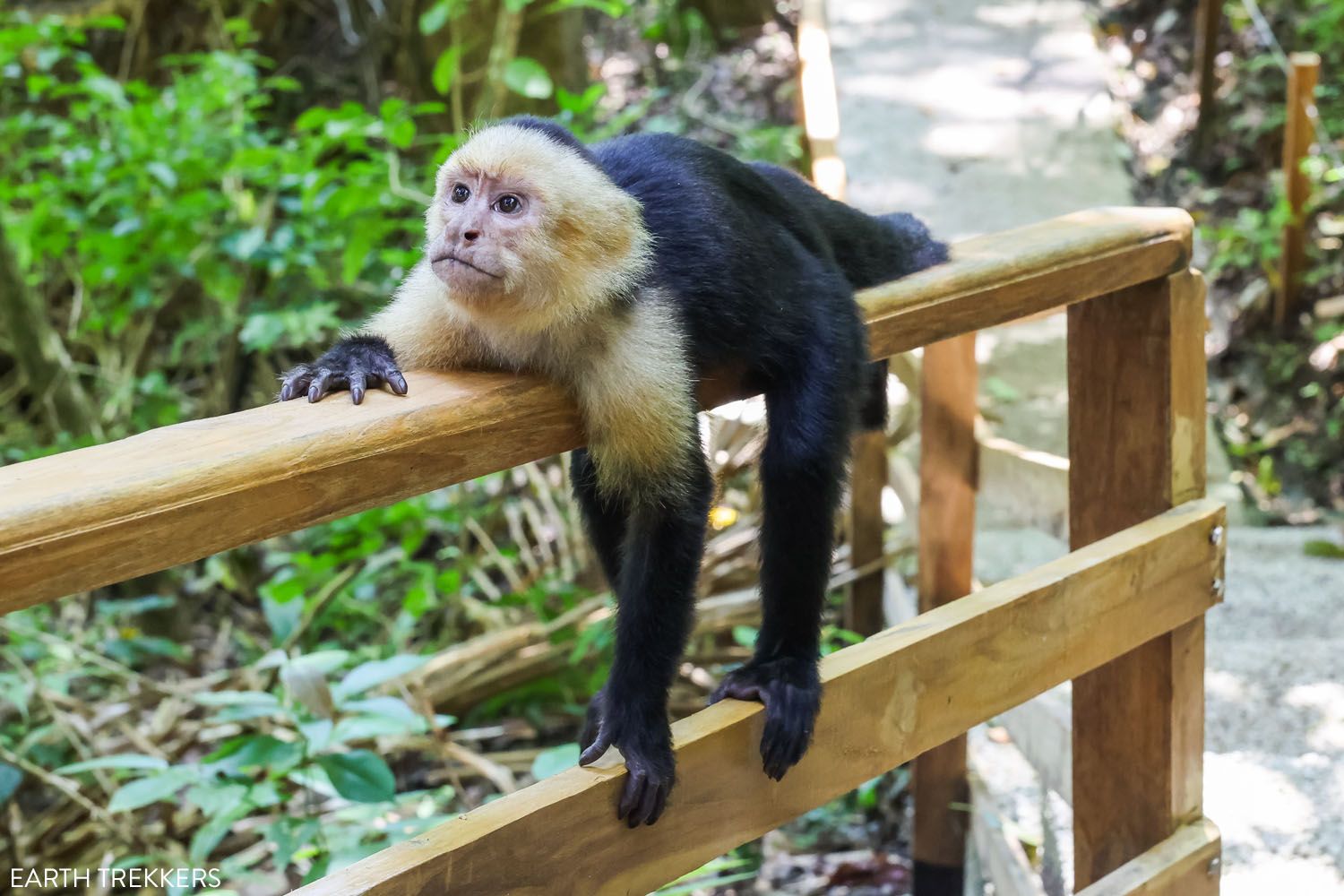
Park Facilities
There is a small café with souvenir shop centrally located in the park. As this is the only place you can get food, and since visitors are not permitted to bring food inside of the park, lines can be very long (they were midday during our visit). So, make sure you eat a big meal before entering the park.
The café is completely enclosed in a cage, to prevent the ‘Mafia monkeys’ from stealing your food.
While visiting Manuel Antonio National Park, do not feed or interact with the wildlife.
Near the beach, there are bathrooms, changing rooms, and showers.
There are a few water refill stations throughout the park.
Beware of the Manzanillo Tree
The Manzanillo tree, also called the Manchineel tree or the beach apple, is one of the most toxic trees in the world. It produces a milky-white sap whose toxins cause blistering and even death. The sap is found in the tree bark, the leaves, and the fruit.

Avoid these trees, which are found on the beaches in Manuel Antonio. Don’t touch them, don’t sit underneath of them, and definitely don’t eat the fruit. If you come into contact with one of them, notify a park ranger.
This is another great reason why you should hire a guide…they can point out the manzanillo trees on the beach at the end of your tour.
If you have any questions about things to do in Manuel Antonio National Park or how to plan your visit, let us know in the comment section below.
More Information for Your Trip to Costa Rica
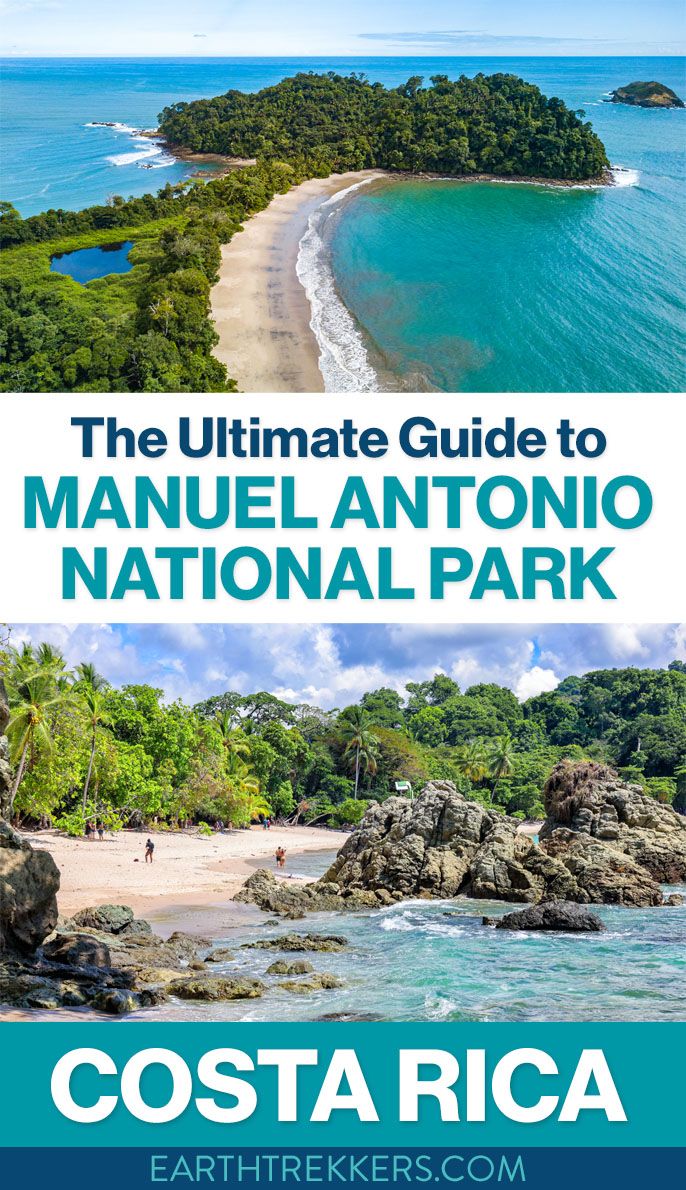
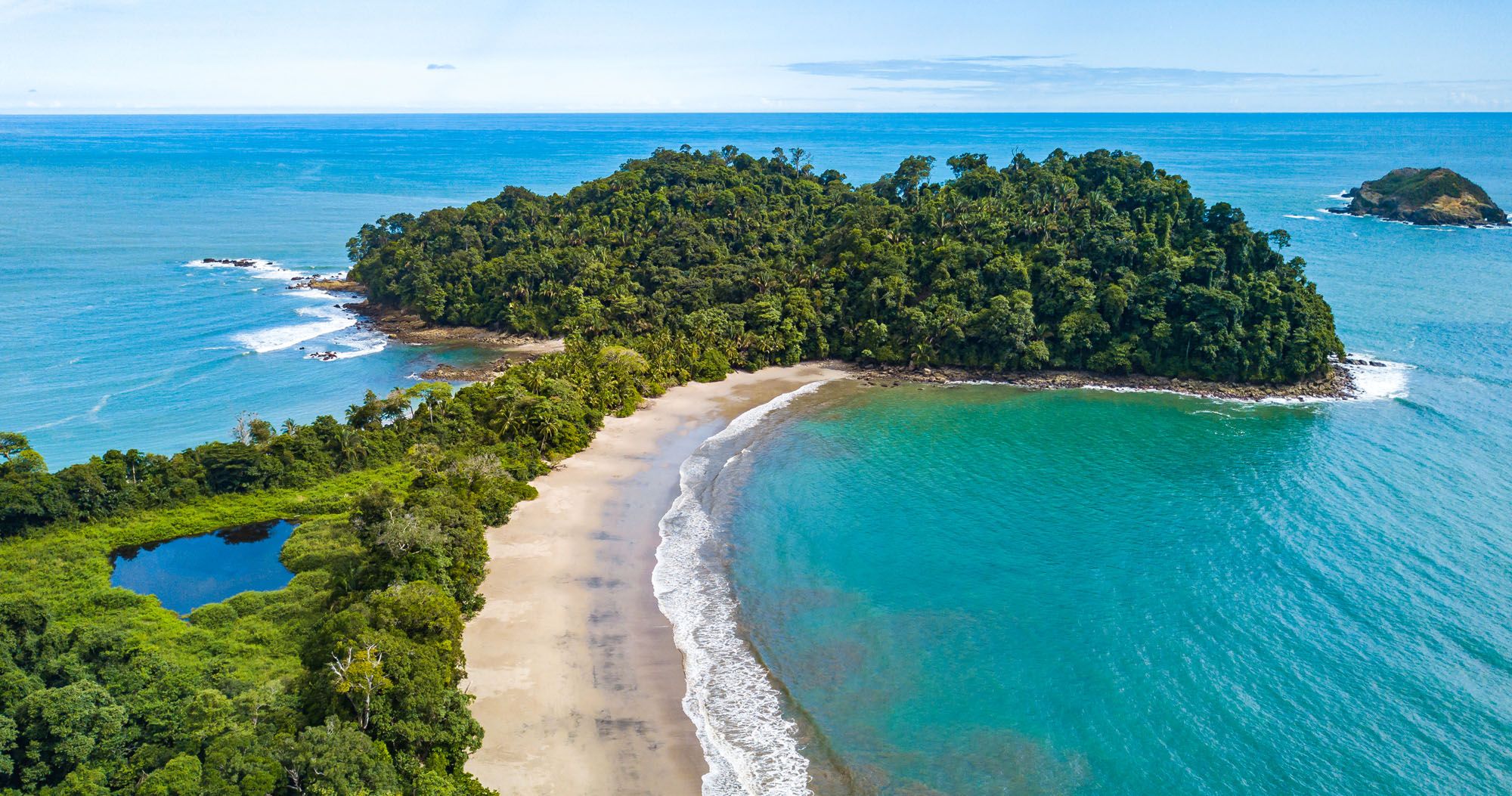
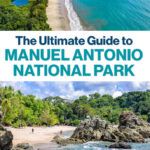
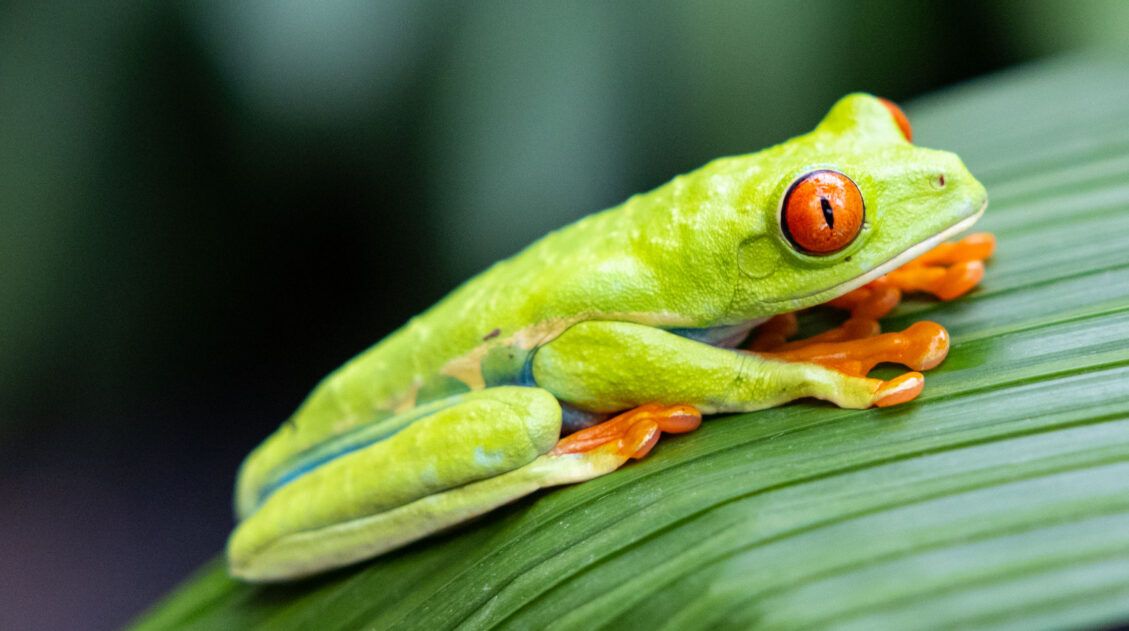
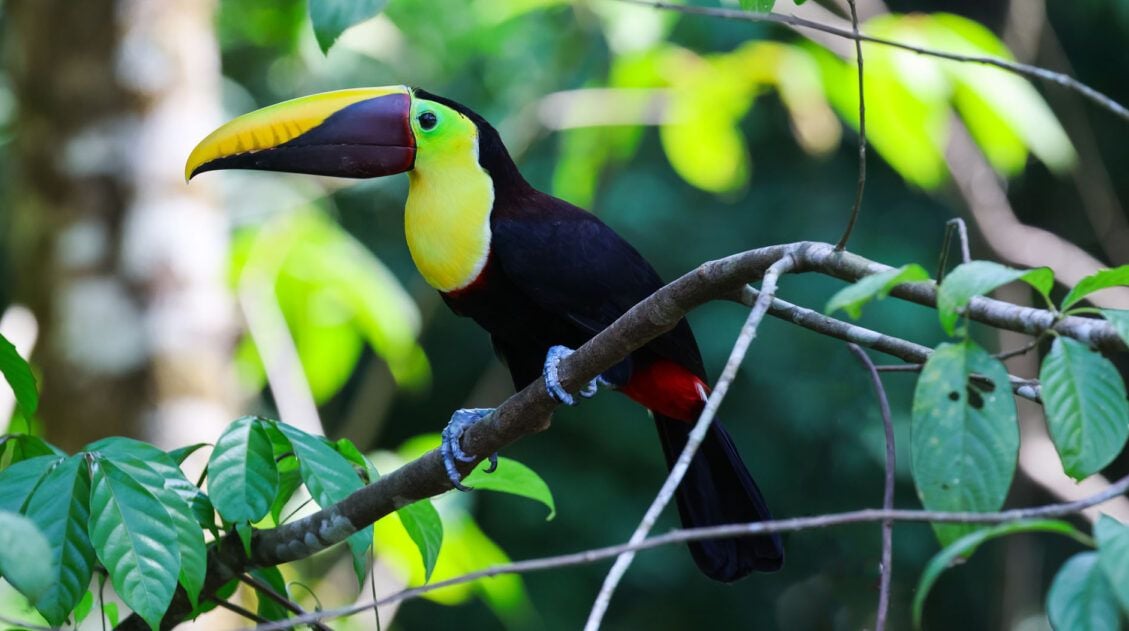
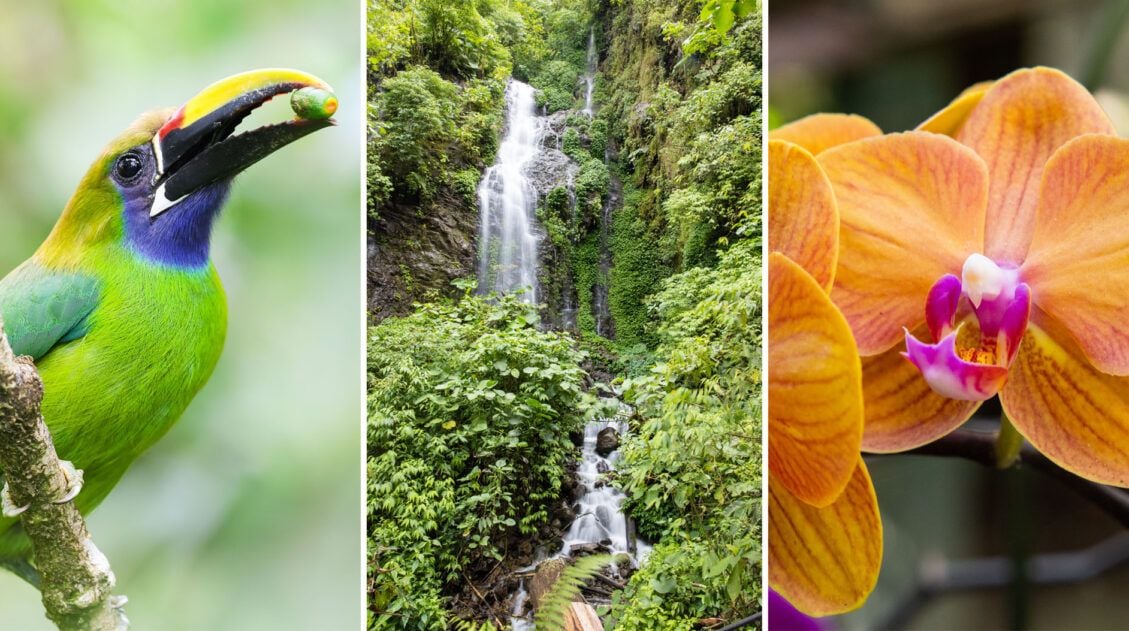
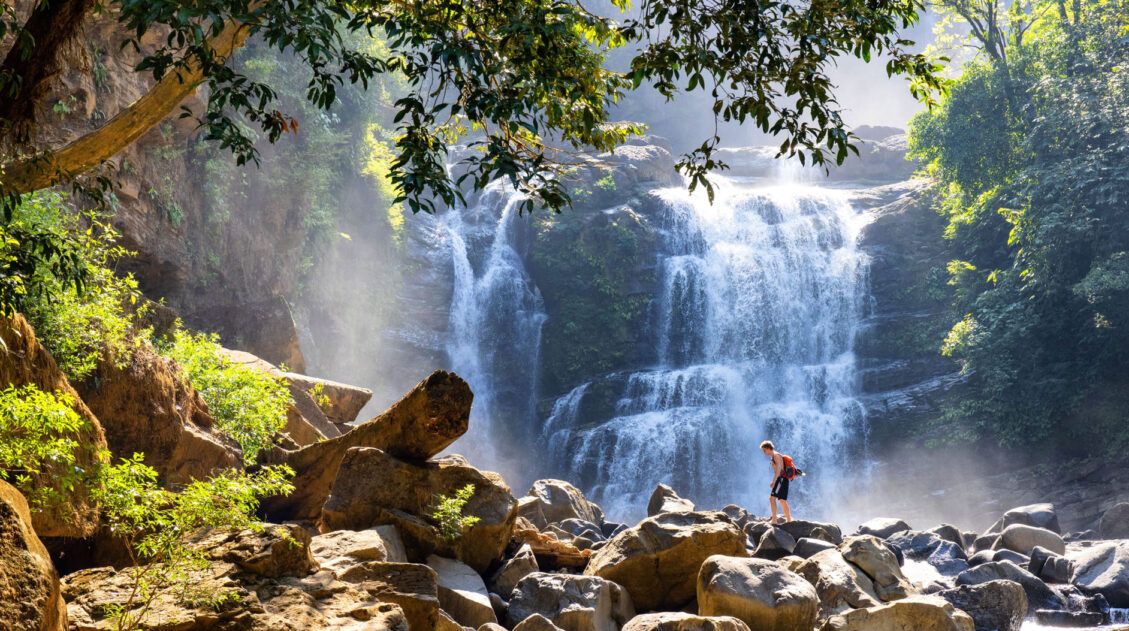
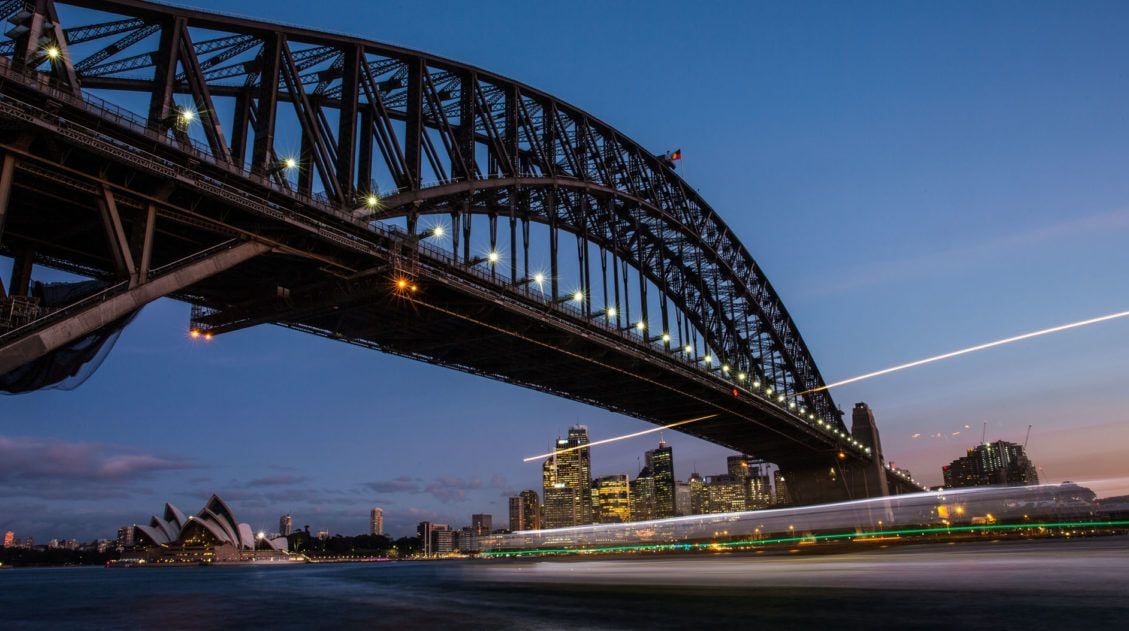
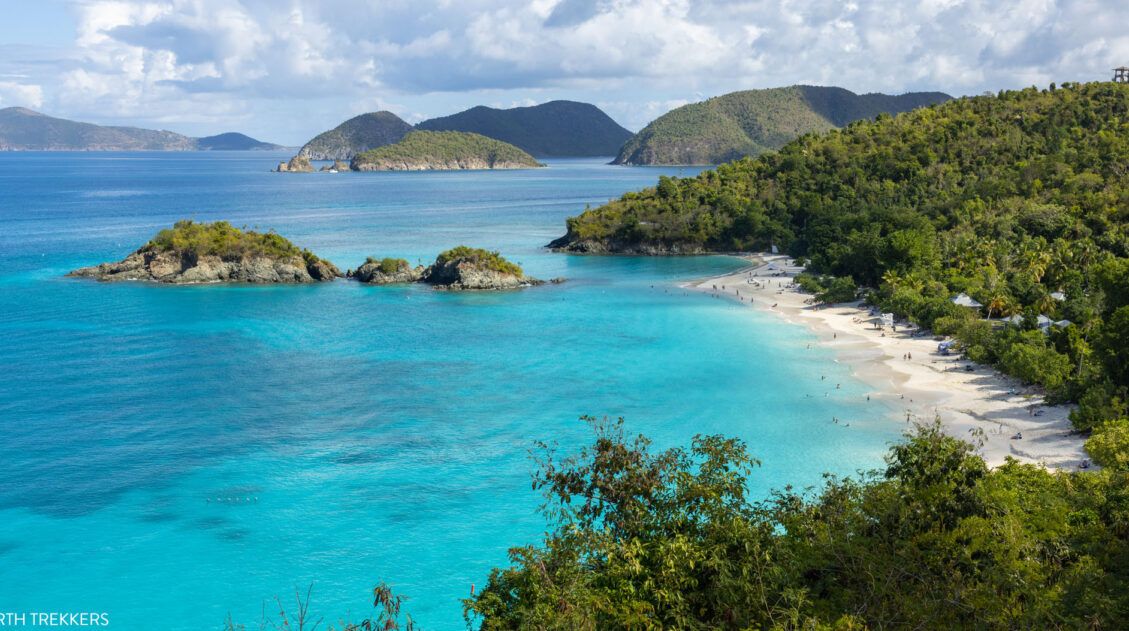
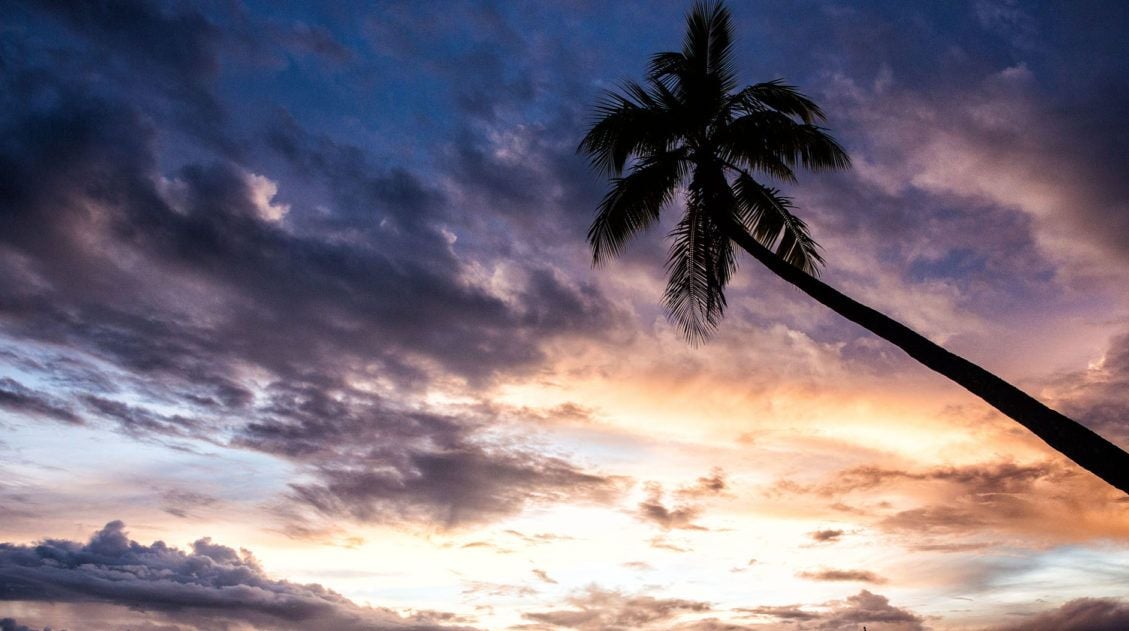

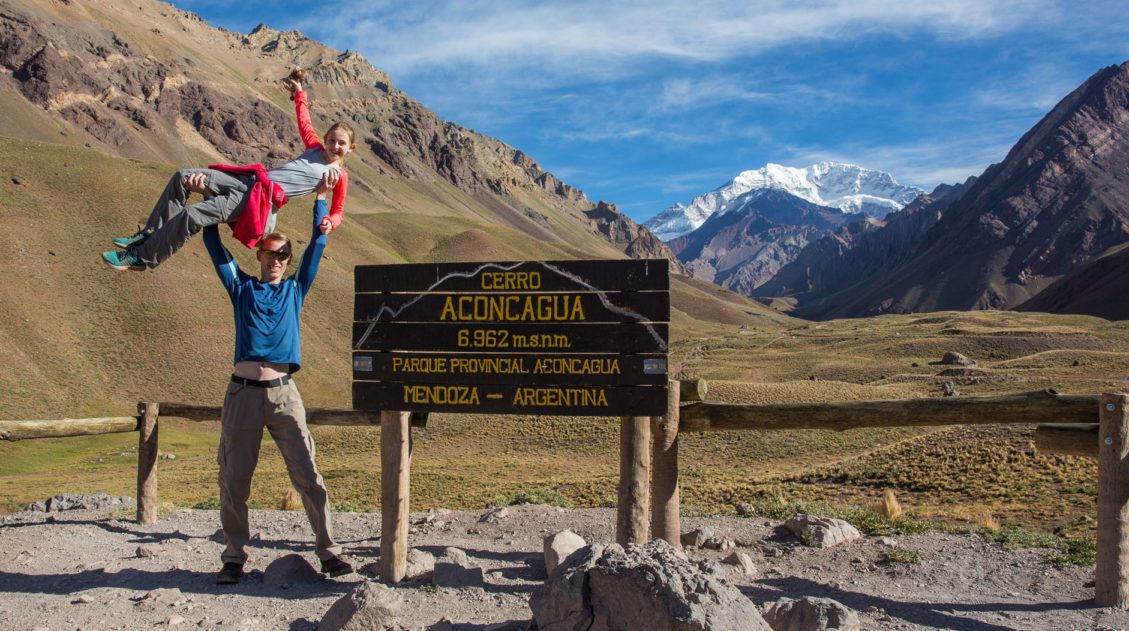


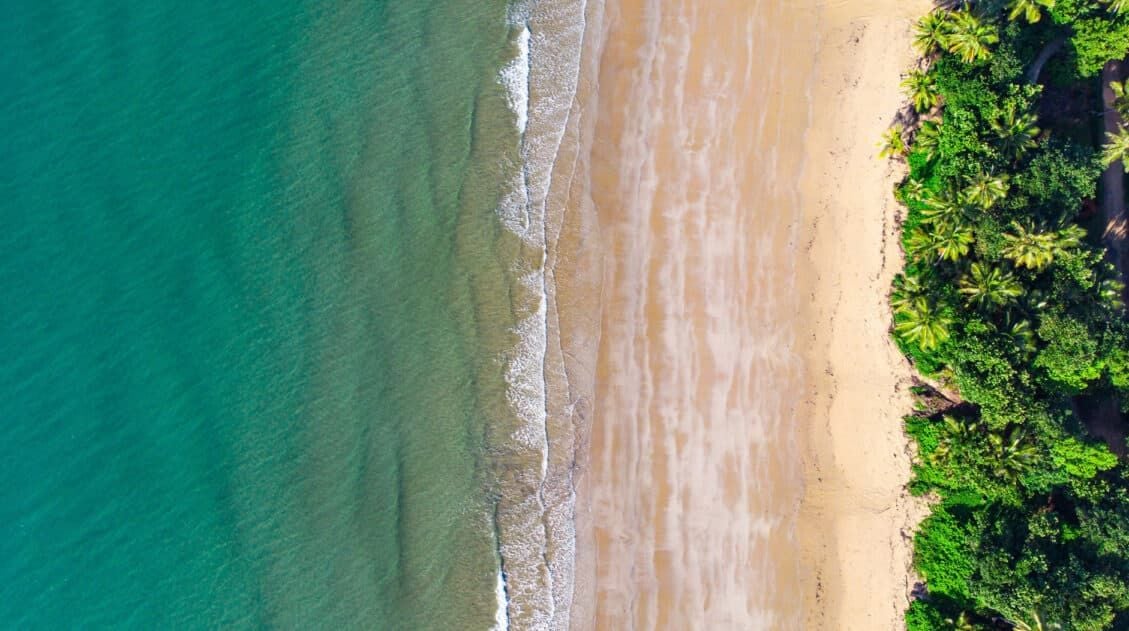
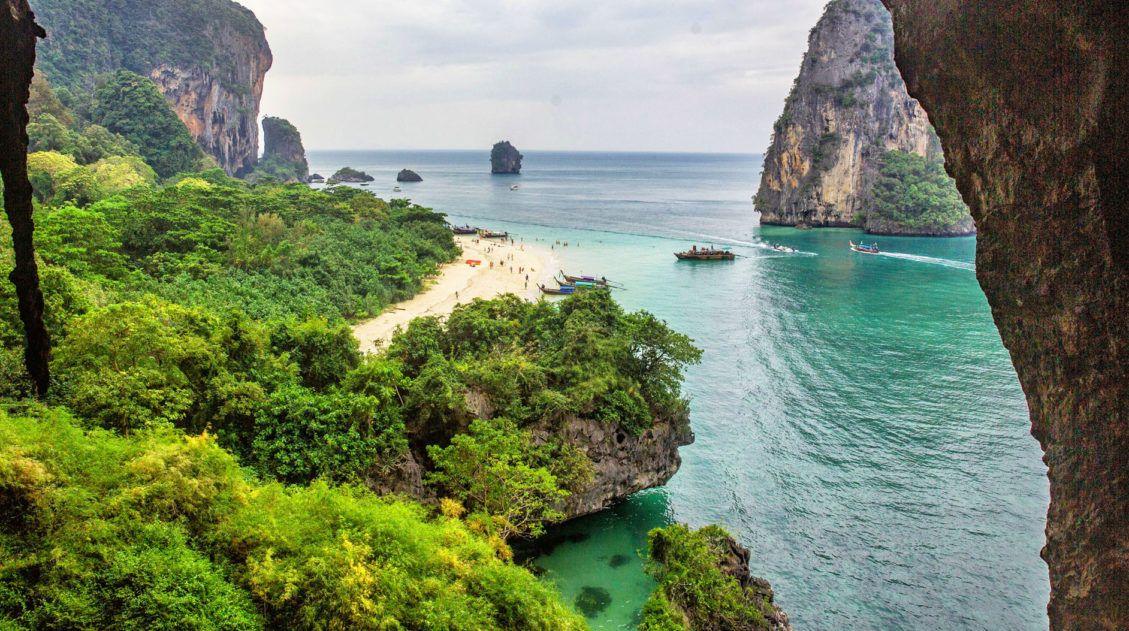
Leave a Reply